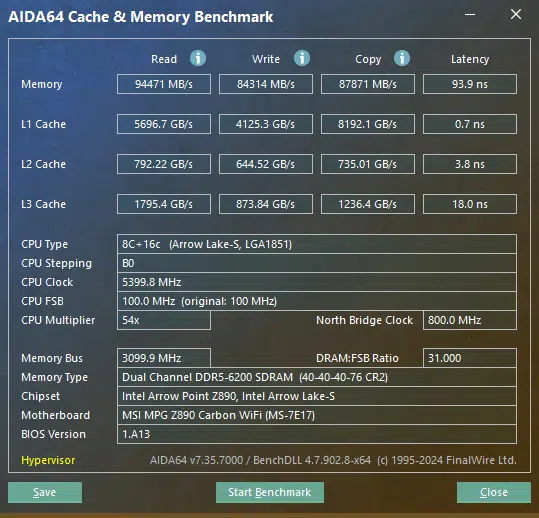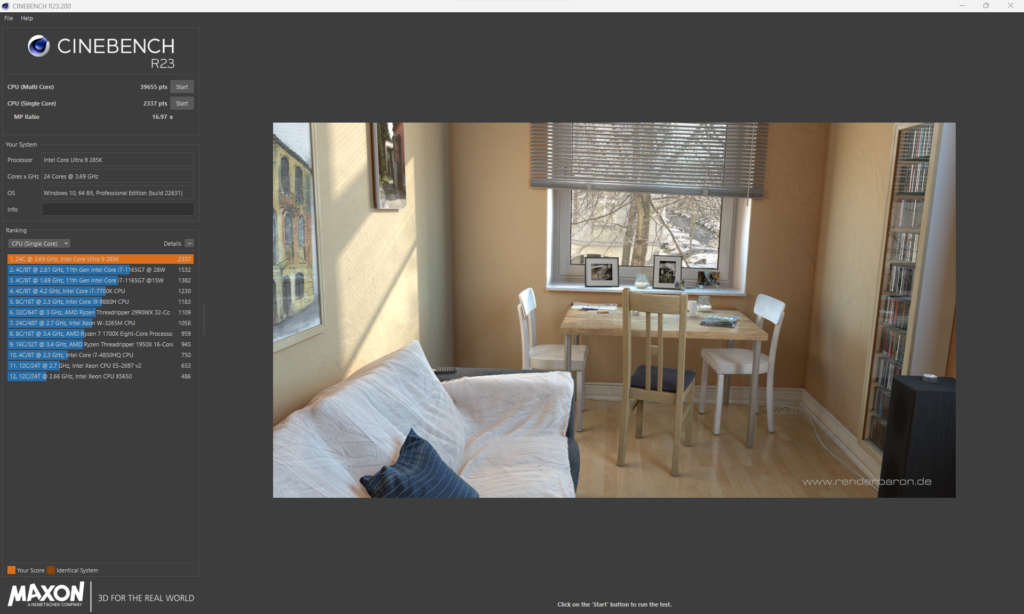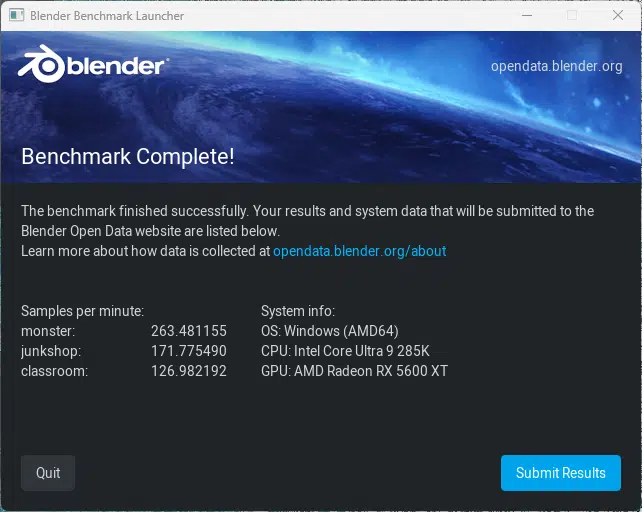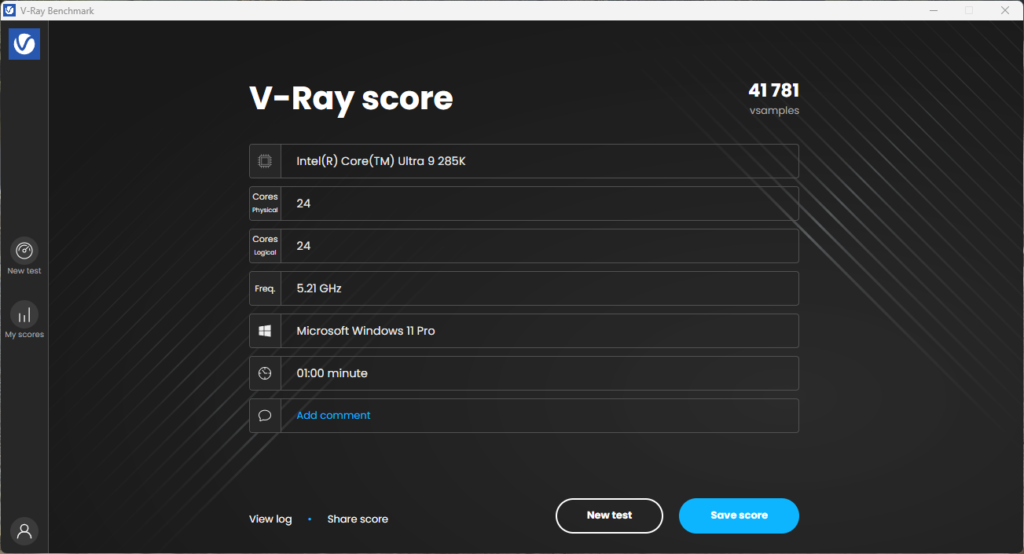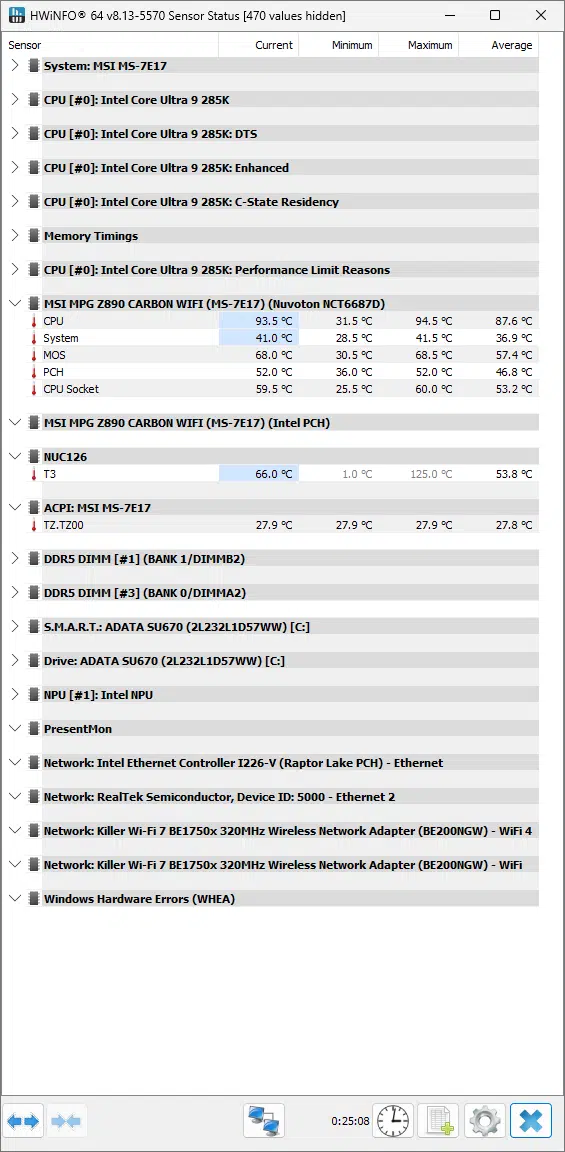
Introduction
Today is an exciting day, not only do we have a release of the new Intel Core Ultra Desktop Processors (Series 2) CPUs, but we also have on our test bench some new Z890 motherboards. You can check out our launch review of the Intel Core Ultra 9 285K & Intel Core Ultra 5 245K.
In this review, the focus here will be on the new MSI MPG Z890 CARBON WIFI that is launching as well. In fact, MSI has a whole slew of Z890-based motherboards launching, and we got our hands on a few, so we’ll start with this one today, and more to follow. This motherboard is right near the top of MSI’s new line-up for the Z890 chipset and will come in at a $499.99 price tag.
With the Core Ultra Series 2 Desktop Processors and Z890 chipset, Intel has remedied some of the shortcomings we have noted with the Z790 series chipset, with one of our biggest gripes being the inability to have a Gen5 NVME drive as well as a Gen5 GPU used at the same time now being fixed. This is due to having 20 Gen5 lanes, an increase from the 20 on previous generations, and should be available on most Z890 motherboards.
Beyond this, the Z890 chipset is an incremental improvement on its predecessor, with up to an additional four (4) Gen 4 lanes, official support of up to 6400 MT/s memory speed, the inclusion of NPUs, and two (2) Thunderbolt 4 ports. You can read more about the chipset here.
In MSI’s new Z890 lineup, you’ll find all their motherboards and its MEG series for enthusiast gaming. Under that is the MEG Z890 GODLIKE, MEG Z890 ACE (which we used for our CPU launch review), and the MEG Z890 UNIFY-X. Under the MEG series sits the MPG series for performance gaming.
That is where you will find the board we are reviewing today, the MPG Z890 CARBON WiFi is at the top range of MSI’s MPG motherboard series for Z890. The other motherboard that follows is the MPG Z890 EDGE TI WiFi. Then the MAG arsenal gaming boards follow under that, which is where you will find the MAG Z890 TOMAHAWK WiFi.
Packaging and Contents
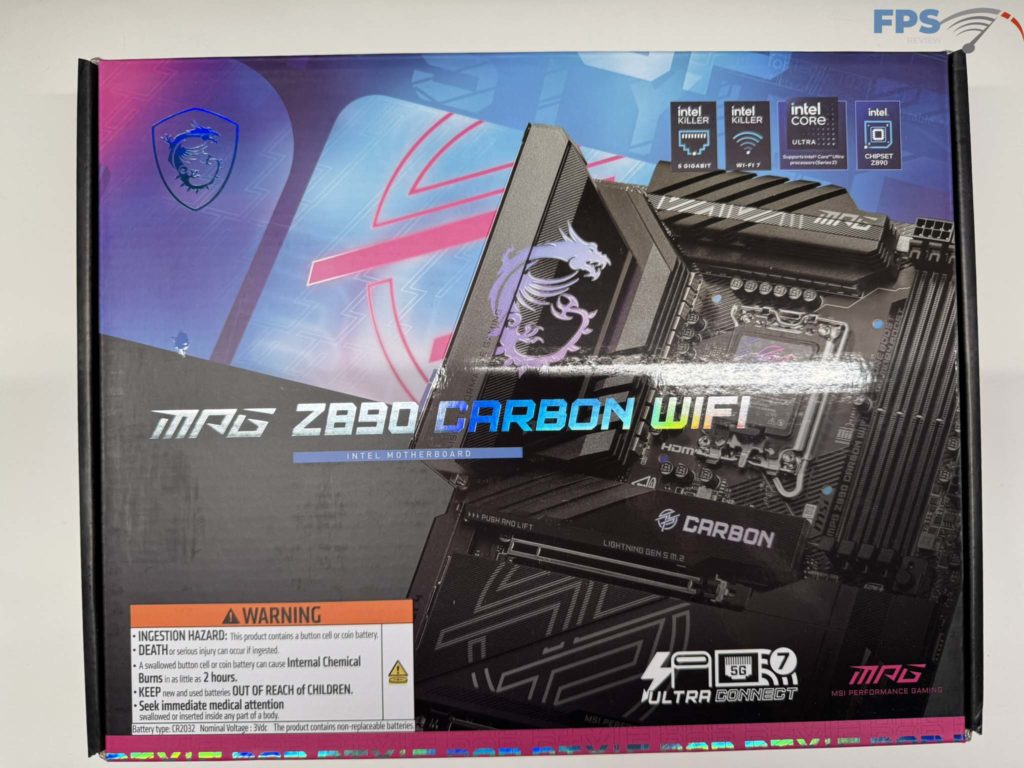
With the MSI MPG Z890 CARBON WIFI being on the higher end of MSI’s offering, the contents are pretty sparse. As you open the box you will see the motherboard very well protected with an accessory box holding the included WIFI antenna and stand. Outside of this, you will find minimal accessories included, much like the MSI MPG X870E CARBON WIFI (MSI’s AMD version of this motherboard) we recently reviewed.
Outside of the WIFI setup, you will find a USB drive with drivers and MSI software, one 1 to 2 RGB extension cable, one ARGB extension cable, one 1 to 3 EZ conn-cable (V2) for RGB connections, an EZ Front Panel Cable (To simplify front panel LED and Button connections), two (2) SATA cables, a book of cable stickers, and the standard regulatory notice and a basic installation guide.
One other item we wanted to specifically mention on its own is MSI’s inclusion of their EZ M.2 Clip II, as well as the EZ M.2 Clip II Removal tool. Even though all of the M.2 standoffs are pre-installed on the motherboard, most of them utilize the new EZ M.2 Clip II, the primary slot uses MSI’s previous generation. The tool provided simplifies the swap out of the EZ M.2 Clip II standoffs.
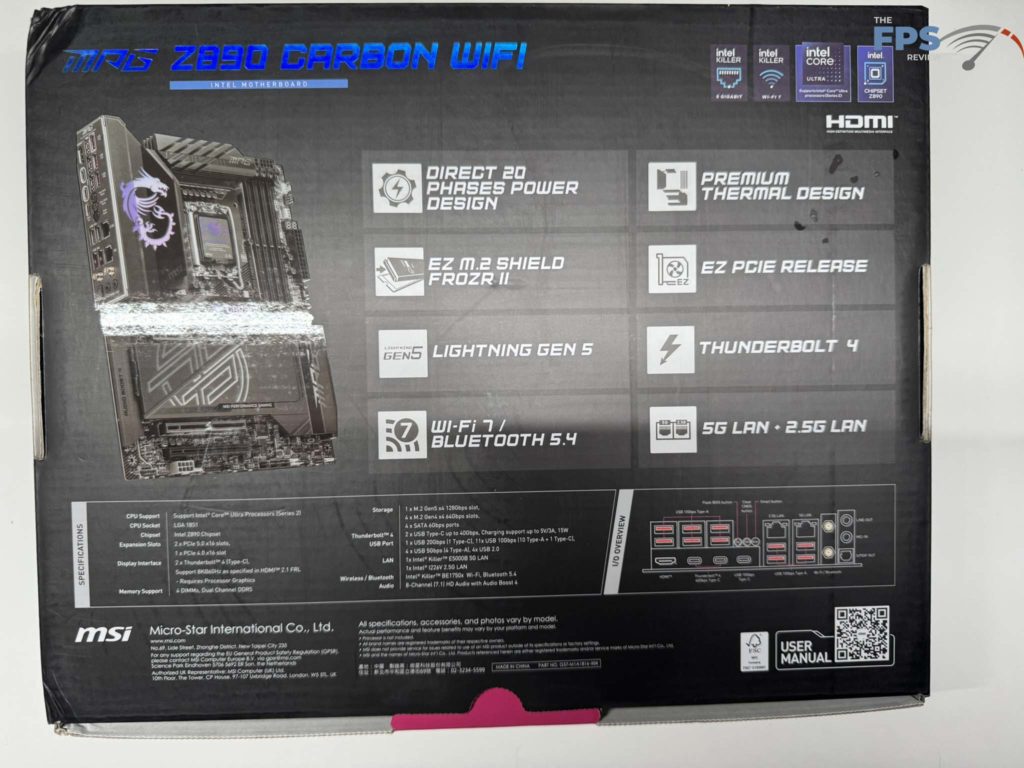
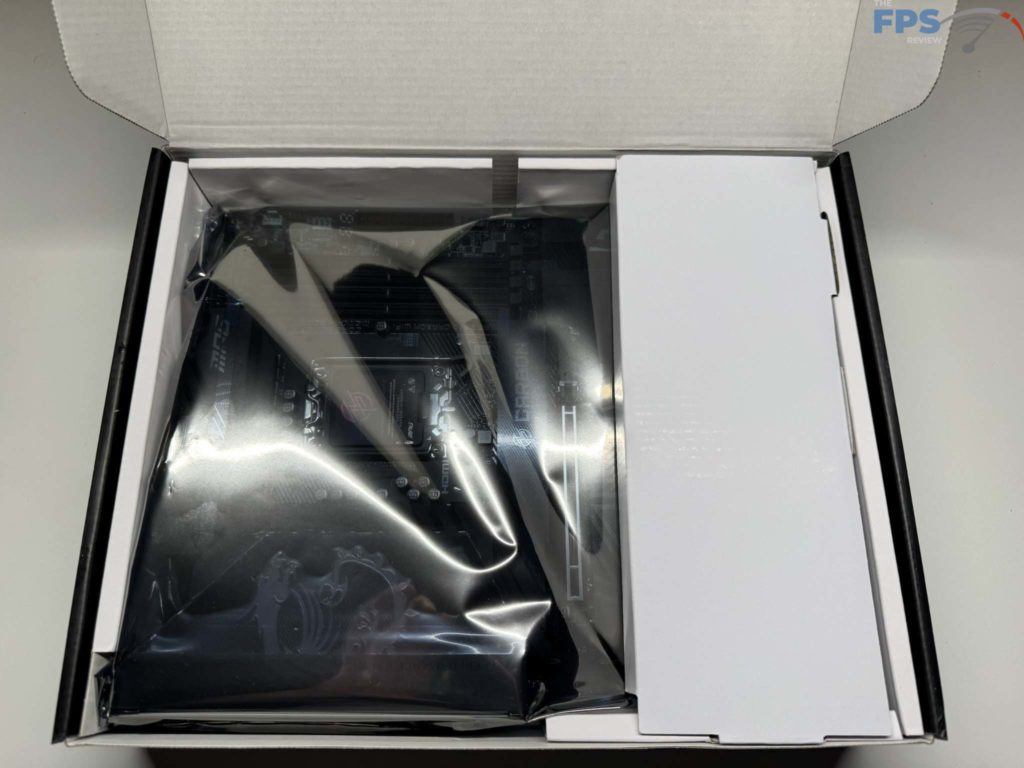
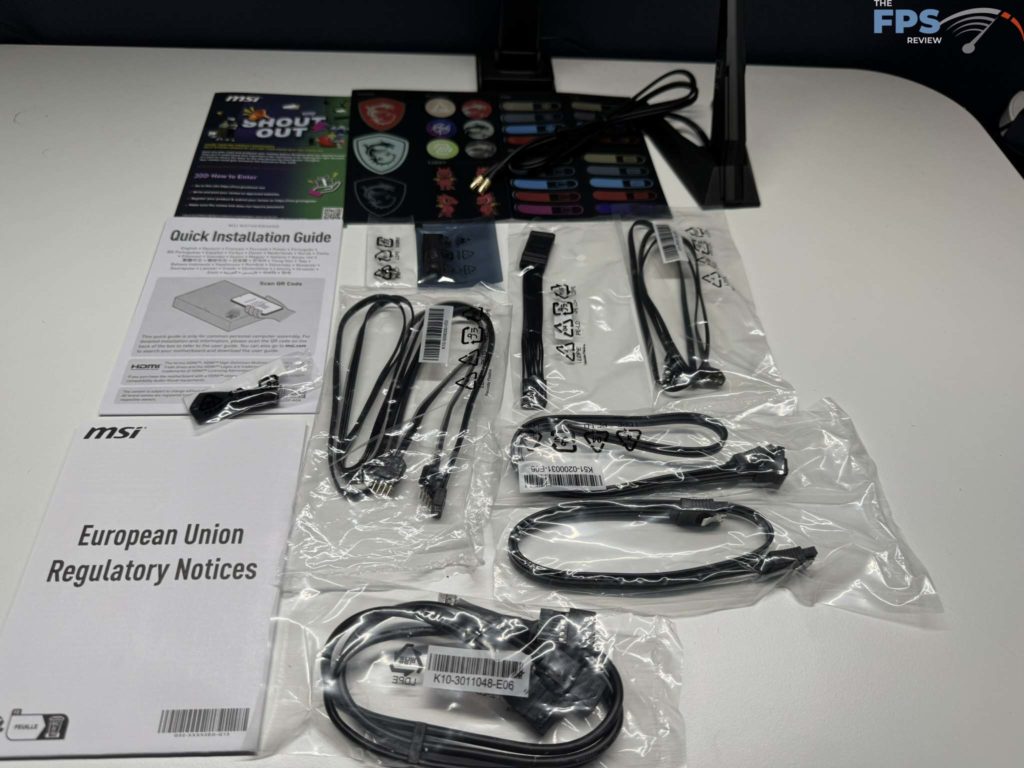
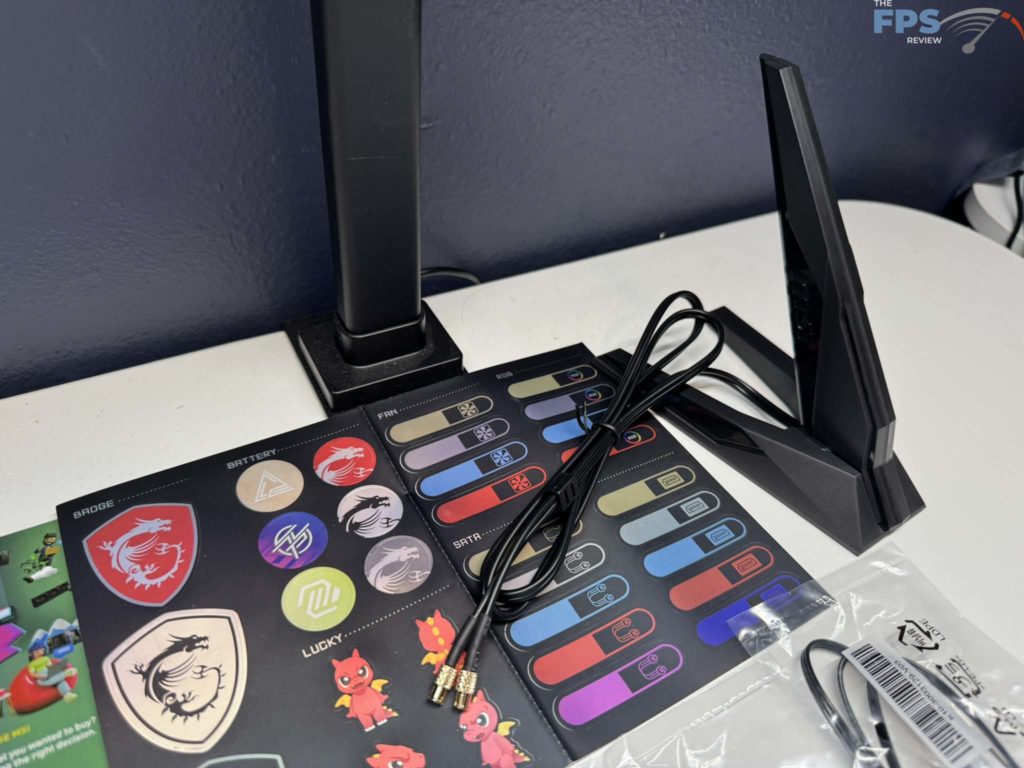
MSI MPG Z890 CARBON WIFI Features
With a first look at the MSI MPG Z890 CARBON WIFI you might think it is the AMD version we recently reviewed, that is how similar these two motherboards look at first glance. MSI has provided its signature FROZR system to provide extended heat-pipe heatsinks for the VRM cooling, the M.2 Shield FROZR for M.2 cooling on all M.2 slots, with the heat sink extending over the SATA ports on this motherboard. After this, you will see two PCIe slots with metal reinforcement, and a third without at the bottom, along with a De-Bug Led up near the 24-pin connector.
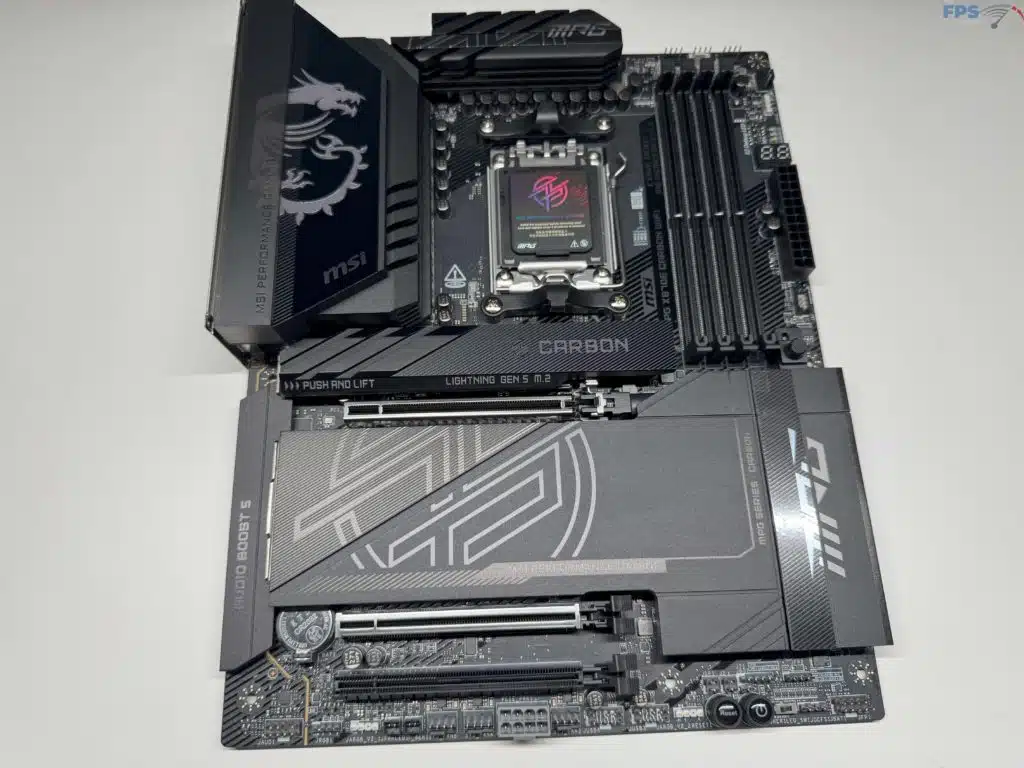
Power Delivery
MSI has gone with a 20+1+1+1 power design, one of MSI’s Ultra Power designs, for the MSI MPG Z890 CARBON WIFI. Here we see the dual CPU power connectors combined for a 110A Smart Power Stage design providing solid performance for this new generation of CPUs when under load.
As with MSI’s recent CARBON series released MSI has provided their most recent FROZR GUARD solution for the VRM’s. This includes a heat-pipe to connect the two MOS heatsinks for VRM cooling with extended heatsinks, as well as improved thermal pad’s for all MSOFET’s, and extra choke thermal pads.
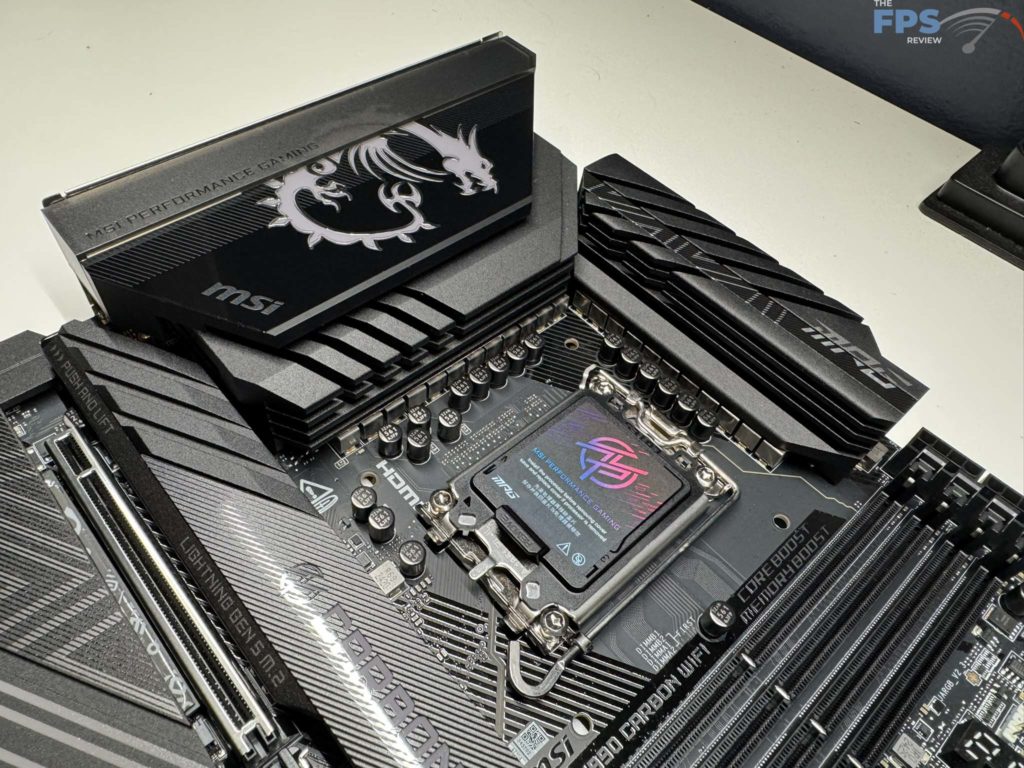
Memory and Storage
As we have been accustomed to seeing, this motherboard will provide a maximum installed memory capacity of 256 GB (64 GB per stick), of non-ECC, un-buffered memory, with a rated maximum speed of 9200MHz. While our memory on hand is not capable of these speeds, we were able to achieve the full 6200 MHz rating on our Patriot memory kit using its XMP-1 setting.
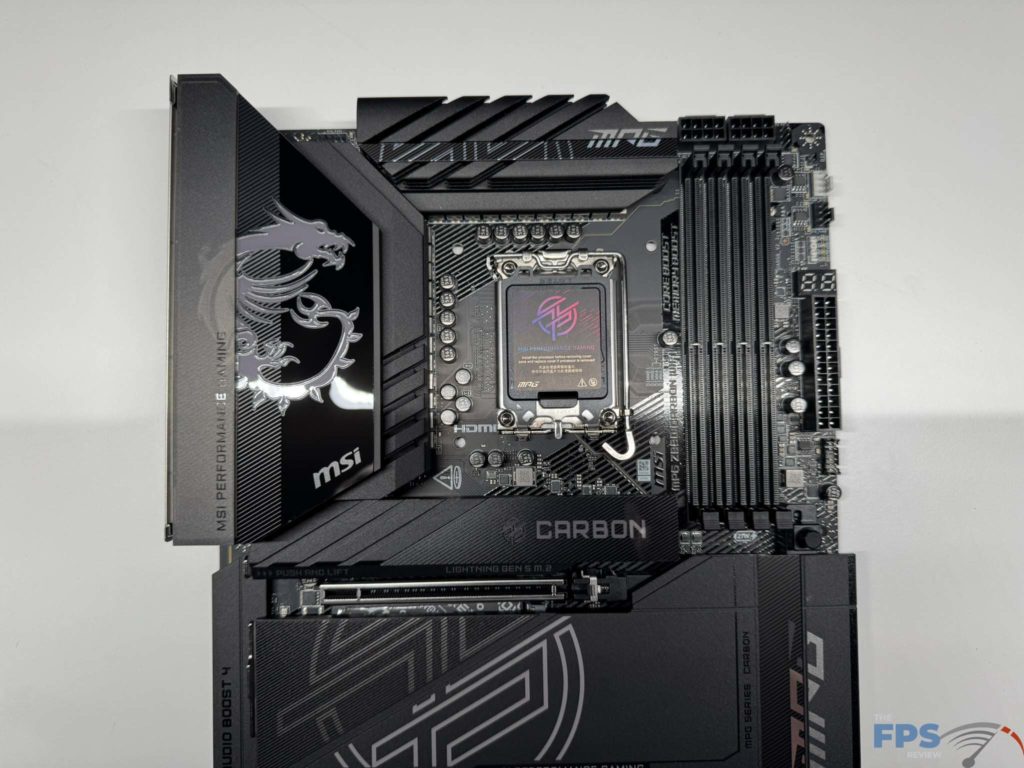
When we look at storage options for this motherboard, we have an astounding five (5) total M.2 NVMe drive slots, with the uppermost slot (M.2_1) being the lone Gen5 slot (all remaining slots are Gen4 speeds). Both M.2_1, and the drive slot directly below the uppermost PCIe slot (M.2_2) are provided via the CPU, the remaining three slots (M.2_3/4/5) are all via the Z890 chipset.
What is nice to see with this new generation from Intel is you can use your uppermost PCIe slot at Gen5 speeds with a full 16 lanes, while also using the M.2_1 slot in Gen5 with its full 4 lanes, this is not something we have seen very frequently. We were very happy to see MSI provide cooling for all the drive slots, with the upper most slot being especially beefy, and all cooling is using the EZ M.2 Shield FROZR II system to allow for completely tool-less removal of drives and cooling. Outside of the M.2 slots you will have the ability to use up to four (4) SATA drives in the 6Gb/s ports located under the chipset cooling heatsink.
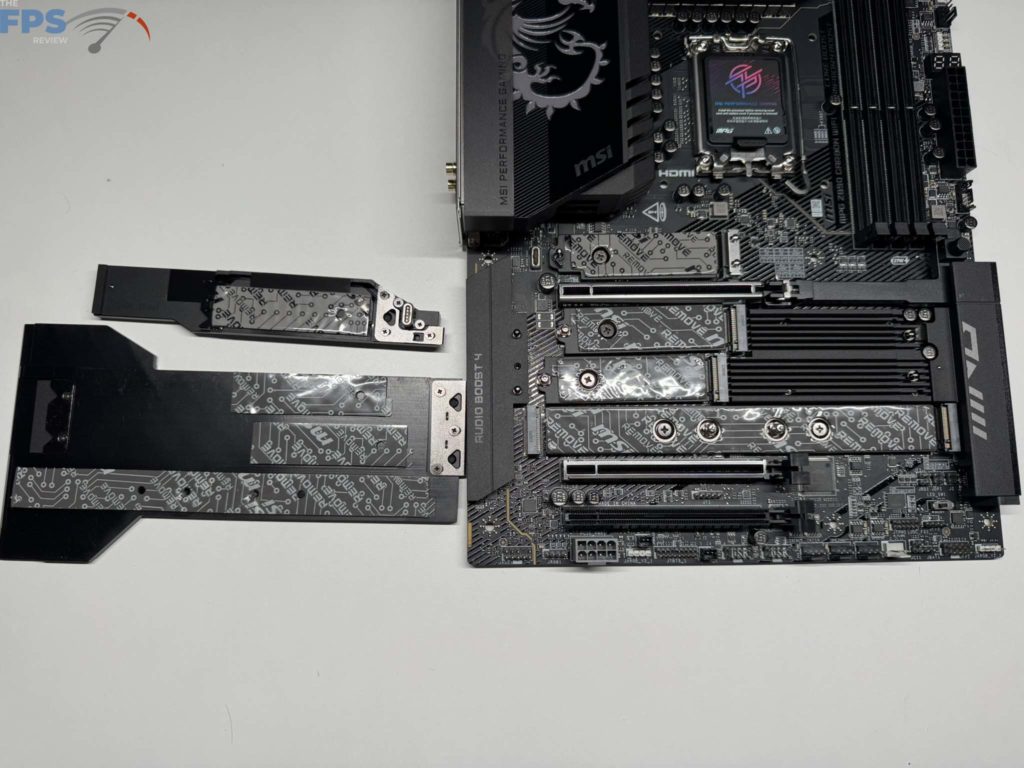
There are a few things we want to bring attention to with regard to MSI’s cooling solution. The first is that if you are installing a drive with a backplate in any of the slots you will need to remove the pre-installed thermal pads, while this is not a big deal it is something worth noting. Beyond this the uppermost slot you will be somewhat limited in the drives you can install there. Due to the size of the VRM cooling we were unable to install our MSI SPATIUM M580 FROZR in the lone Gen5 slot, and with no other Gen5 drives on hand you will notice we have not been able to test the speeds.
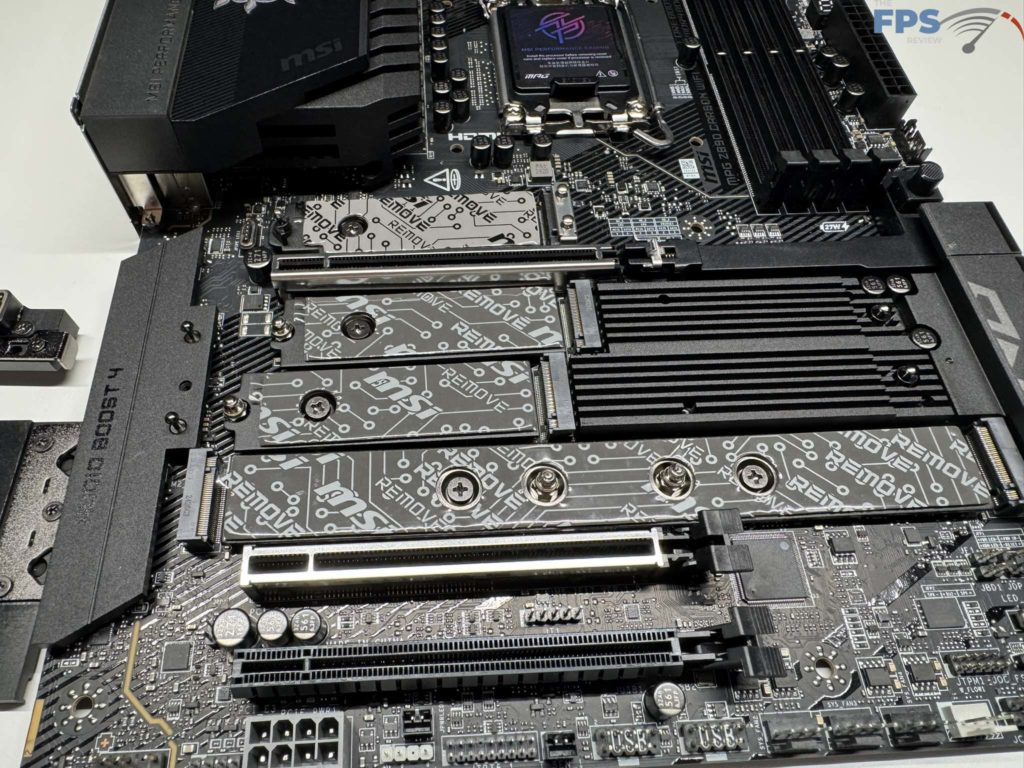
Expansion
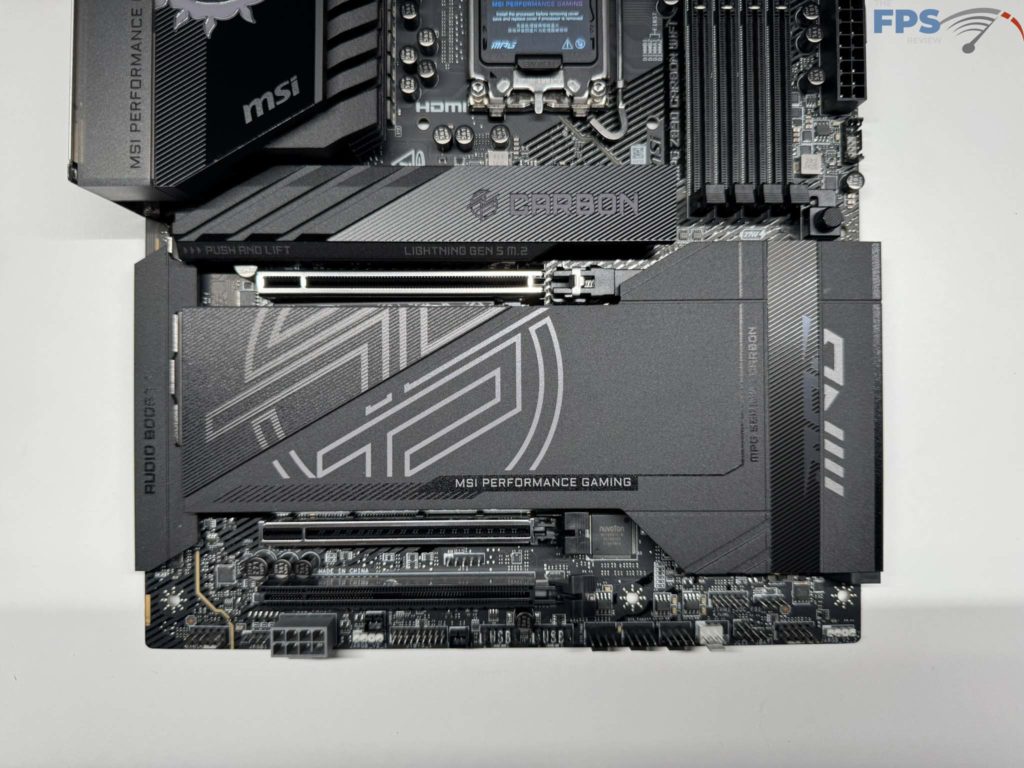
With the MSI MPG Z890 CARBON WIFI, MSI has provided a total of three PCIe x16-sized slots, however, only the uppermost slot is capable of the full x16 connection speed. When you install a device in the second slot you will drop both slots to x8 performance. Both of these slots have the Steel Armor II system for metal reinforcement, a nice feature to have with the size and weight of current-generation GPUs.
After this MSI has provided an EZ PCIe Release system for removal of the uppermost PCIe card, which makes GPU removal literally as easy as pushing a button located on the right side of the motherboard beside the DDR5 slots. One thing to be aware of is that when using the top PCIe slot, the M.2_2 slot will be covered and essentially unusable for a full-size device.
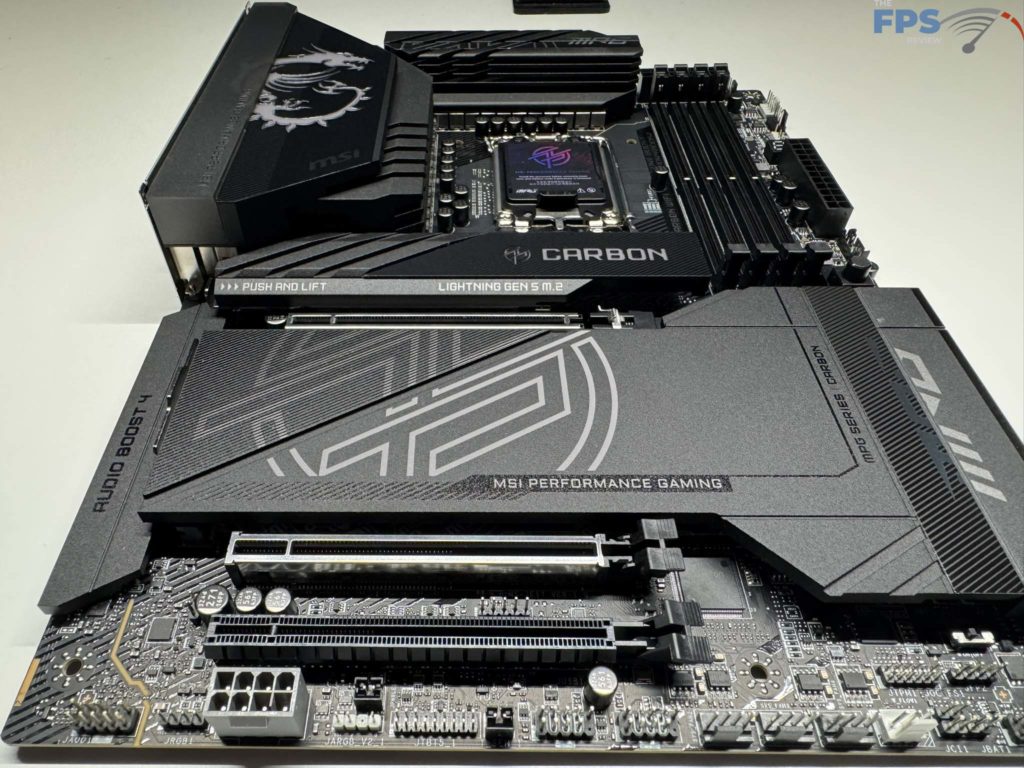
I/O
The Rear I/O panel on the MSI MPG Z890 CARBON WIFI is jam-packed with connectivity options. It is filled with USB A and C ports, two (2) RJ 45 LAN ports, an HDMI port, WIFI connectors, three (3) motherboard buttons, and the standard audio ports. A nice thing we are seeing with this generation is minimizing of USB 2.0 ports on the rear I/O, and for this motherboard, MSI has completely removed them.
There are two (2) Thunderbolt 4 USB-C ports from the CPU, one (1) USB 10Gbps USB-C port from the Z890 Chipset, two (2) USB 10 Gbps USB-A ports from the Z890 Chipset, and an additional eight (8) USB 10 Gbps USB-A ports from a RTS5420 chip. This provides us with some serious USB connectivity options, with it all being high-speed. Beyond this, you are able to connect up to a 7.1 Channel Audio system through the S/PDIF system and standard connectors, all from the Realtek ALC1220P Codec.
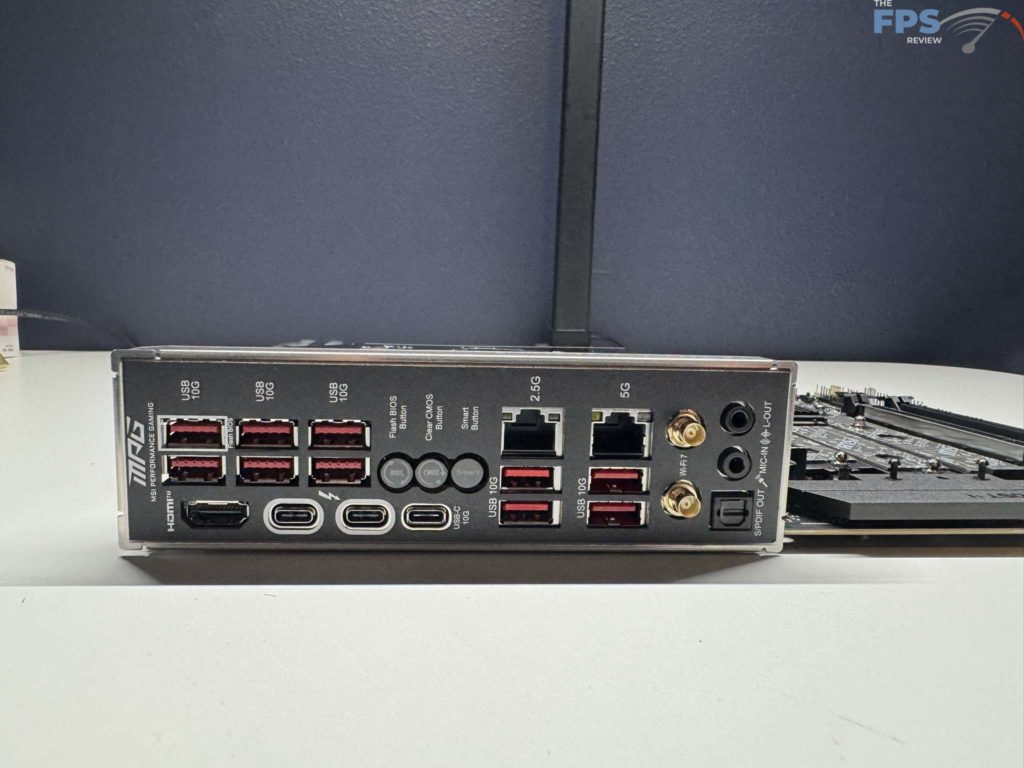
For the networking options, MSI has provided some heavy firepower. The first thing you will notice is there are two (2) RJ45 LAN ports. Both of these are from Intel NICs, with the left port being a 2.5 Gbps powered by an Intel I226V LAN controller, and the right port being capable of 5Gbps from an Intel Killer E5000B LAN controller. WIFI and Bluetooth is provided from a pre-installed M.2 (Key-E) card located under the VRM cooling. The pre-installed card is an Intel Killer BE1750x providing support for WIFI 7 speeds up to 5.8 Gbps, and Bluetooth 5.4.
When we look past the rear I/O connections, there is still quite a bit of connectivity options provided from on-board headers. There is a single 20Gbps USB-C header that is provided by the Z890 chipset, which is capable of up to 27W for fast charging after there are an additional four (4) USB-A 5Gbps ports from a GL3523 chip and four (4) USB-A 2.0 ports from a GL850G chip.
We have not forgotten about the RGB connectors on this motherboard, as there are a total of four (4) options for connection. This starts with a single traditional 4-pin RGB LED connector, and an additional three (3) 3-pin A-RAINBOW V2 (ARGB Gen2) LED connectors. These are all controlled via the MSI Mystic Light RGB controller software to synchronize with any RGB devices you are using.
This motherboard provides you with a total of seven (7) 4-pin connectors for cooling connections. There is a dedicated CPU fan connector, a water pump/system fan connector, both located near the CPU power plugs and an additional five (5) 4-pin system fan connectors. Beyond this, you will find a single 3-pin water flow sensor connector, and a 2-pin thermal sensor connector for more data points when pushing this motherboard to its limits.
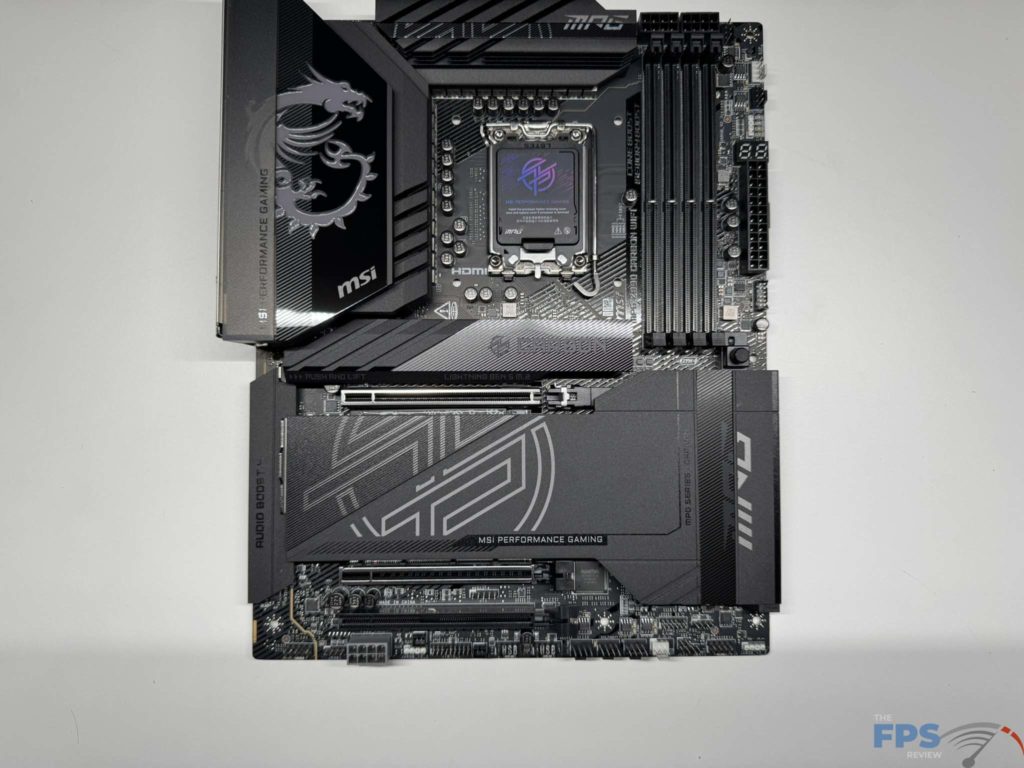
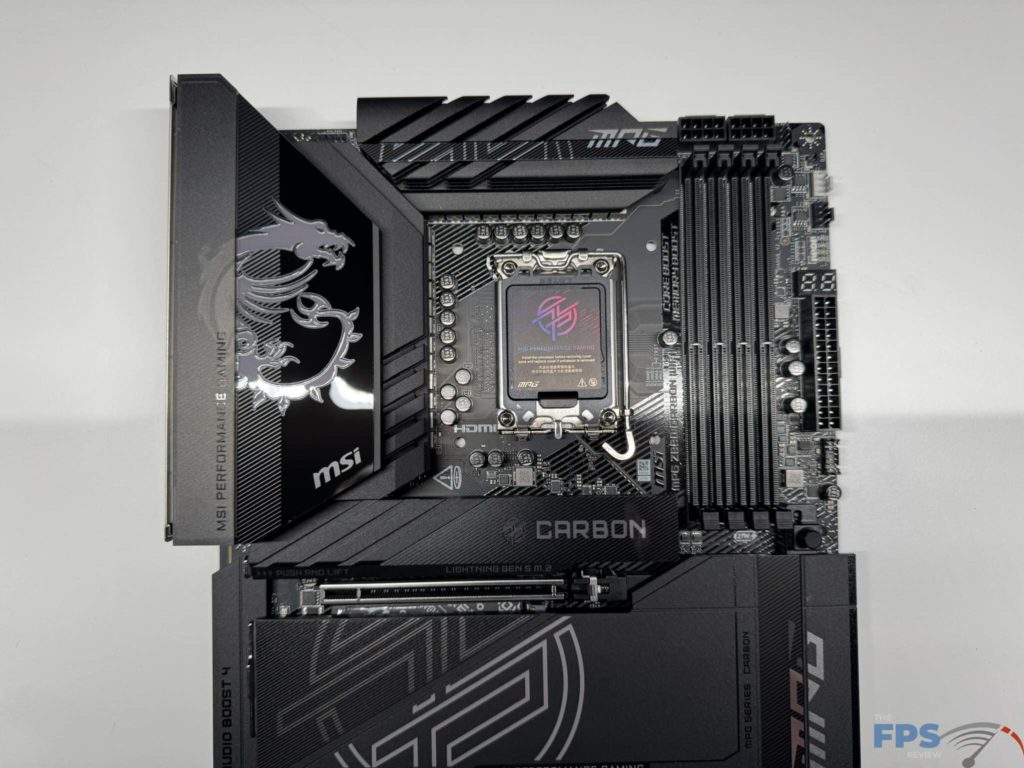
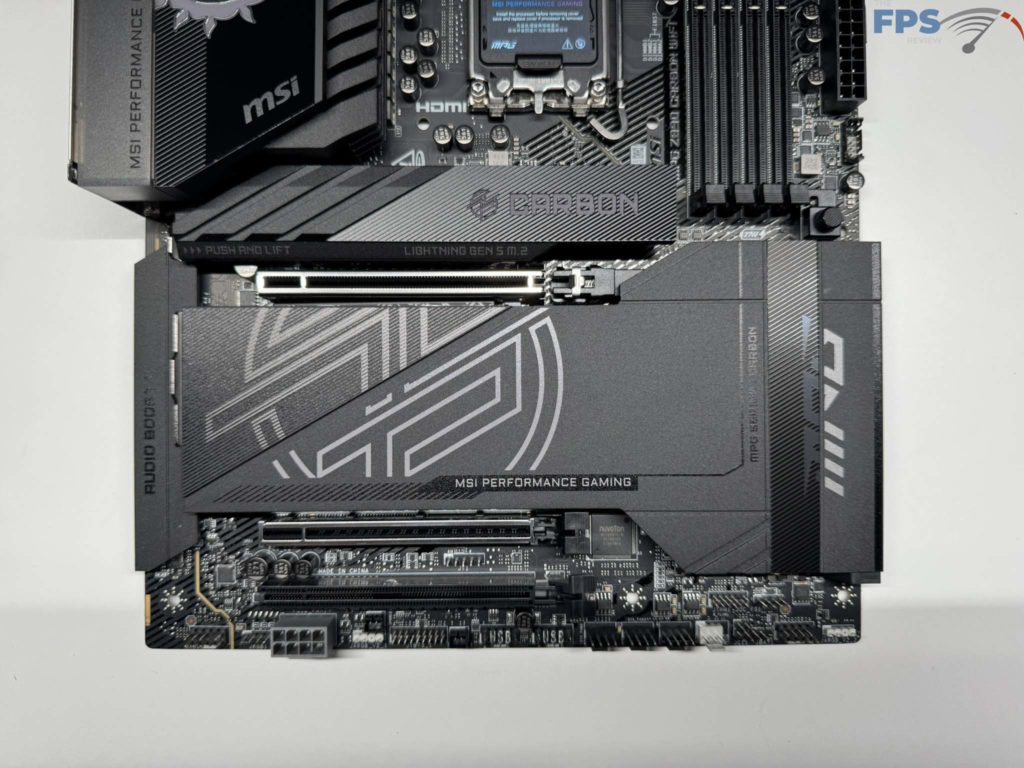
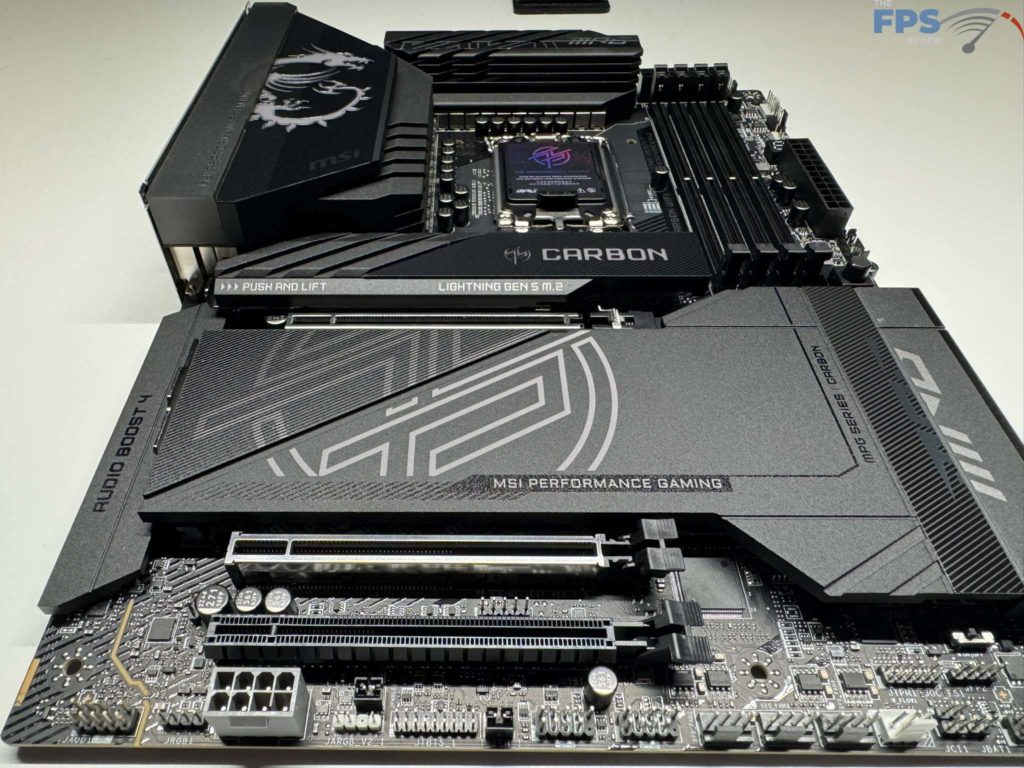
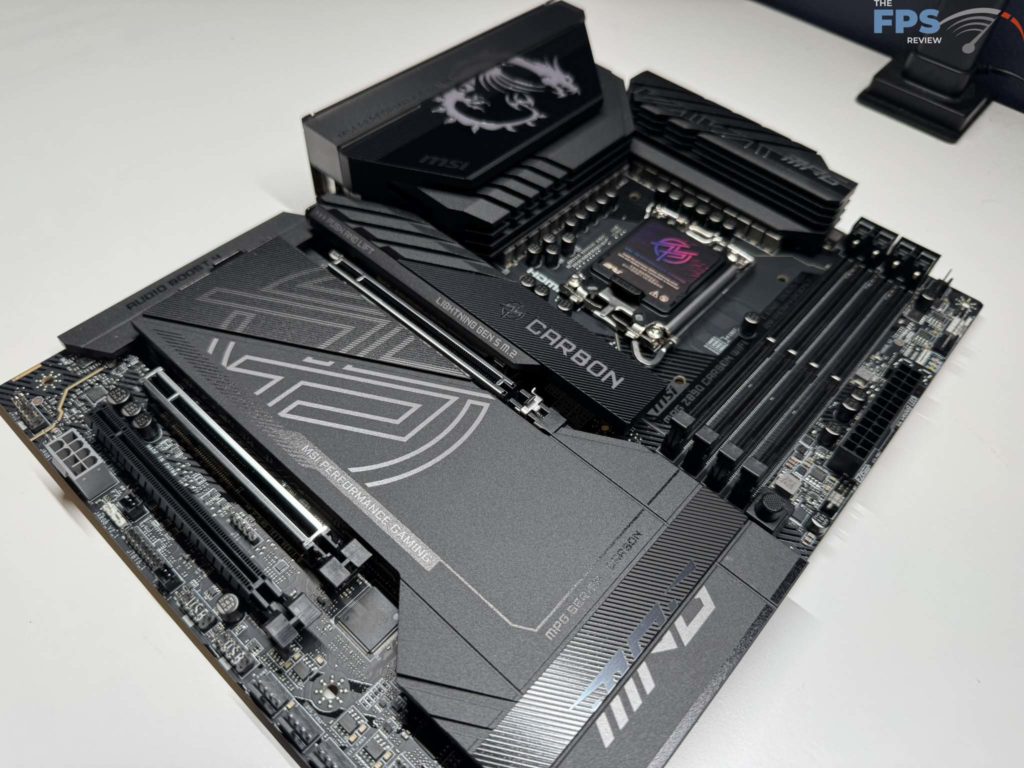
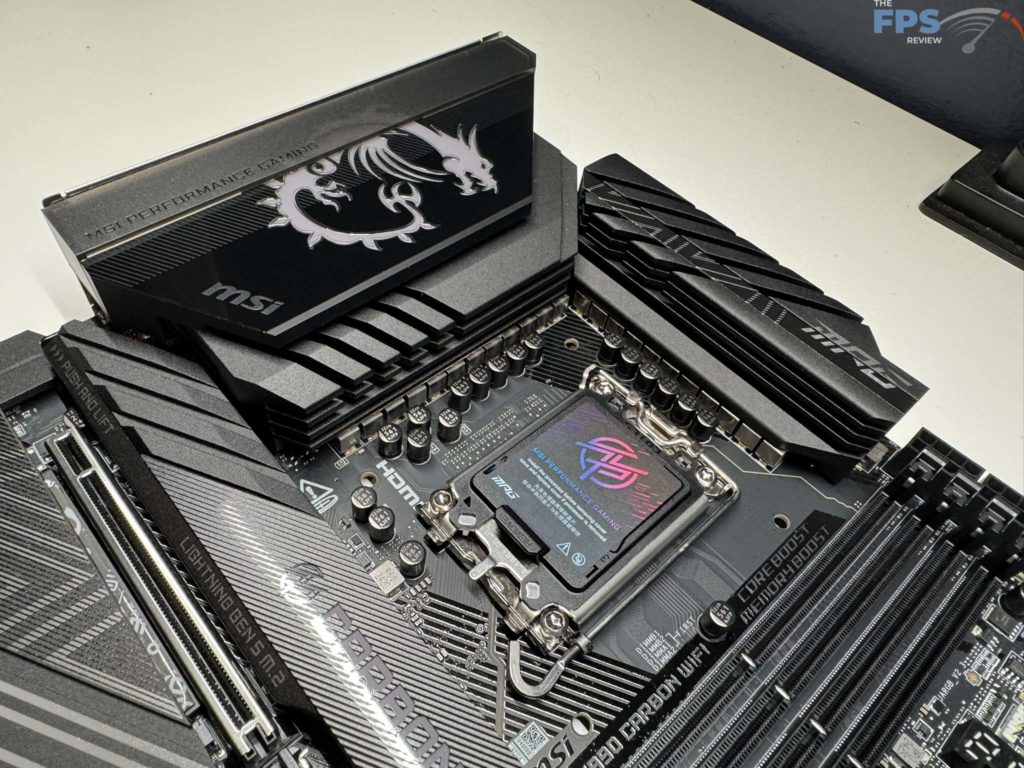
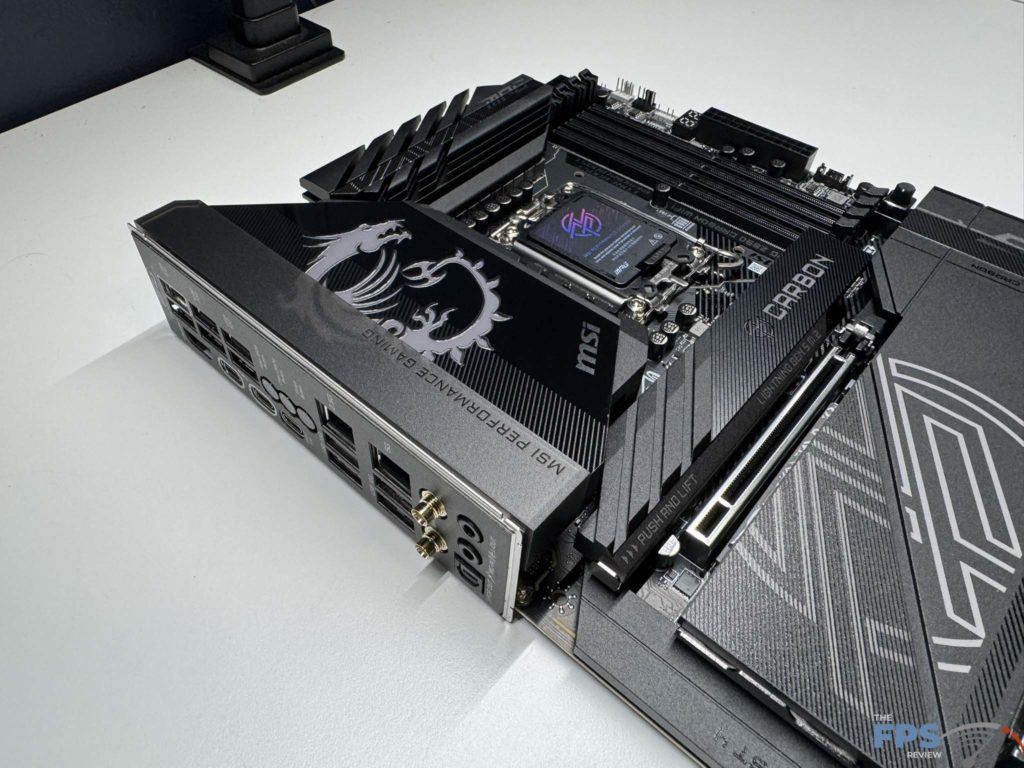
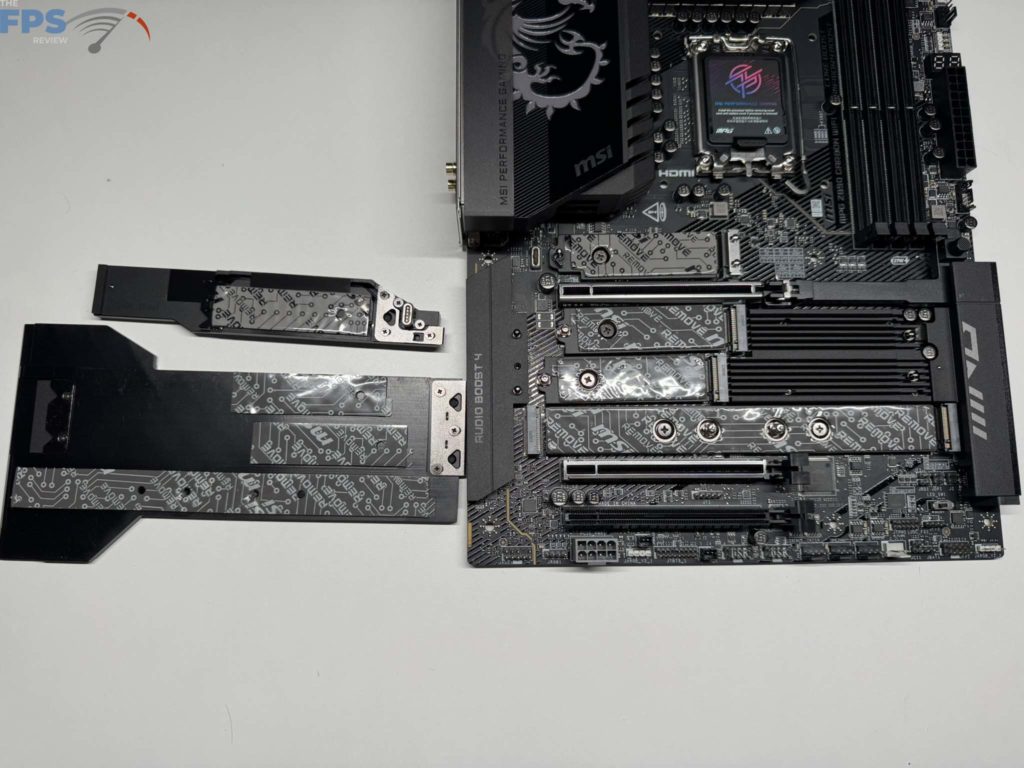
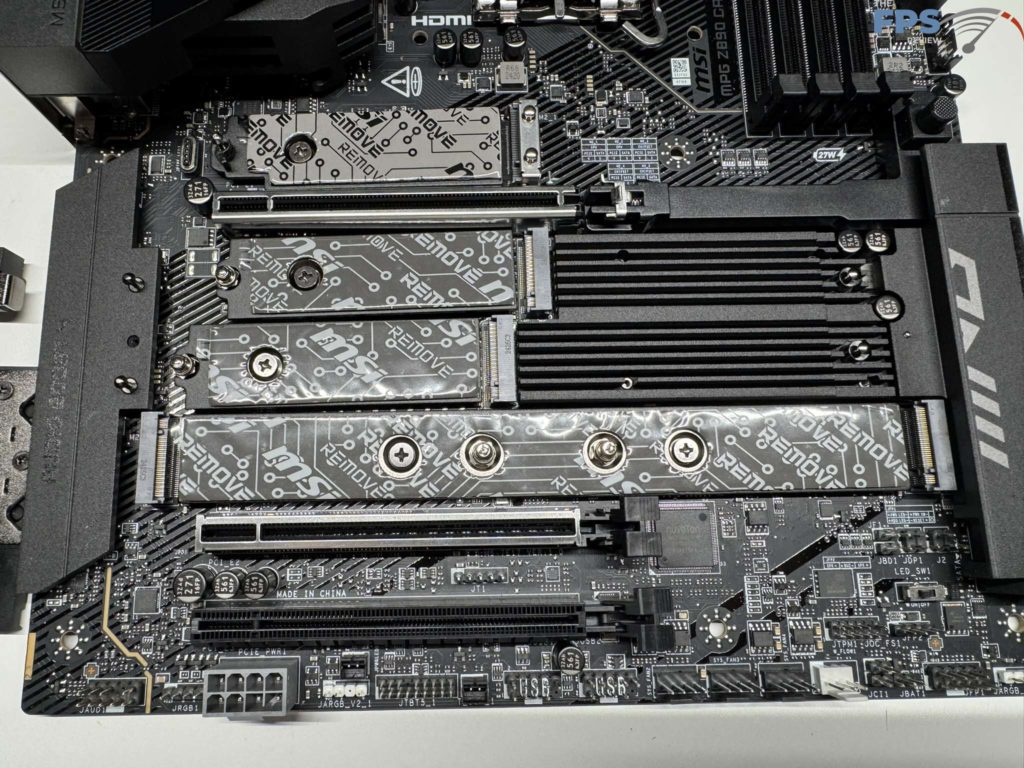
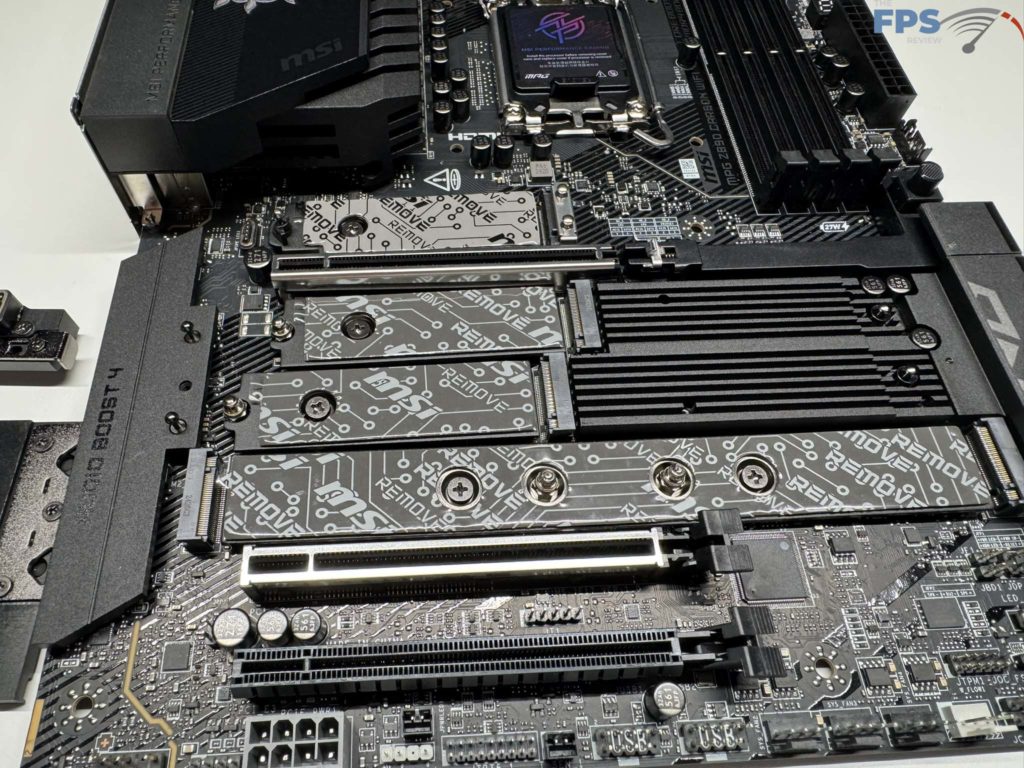
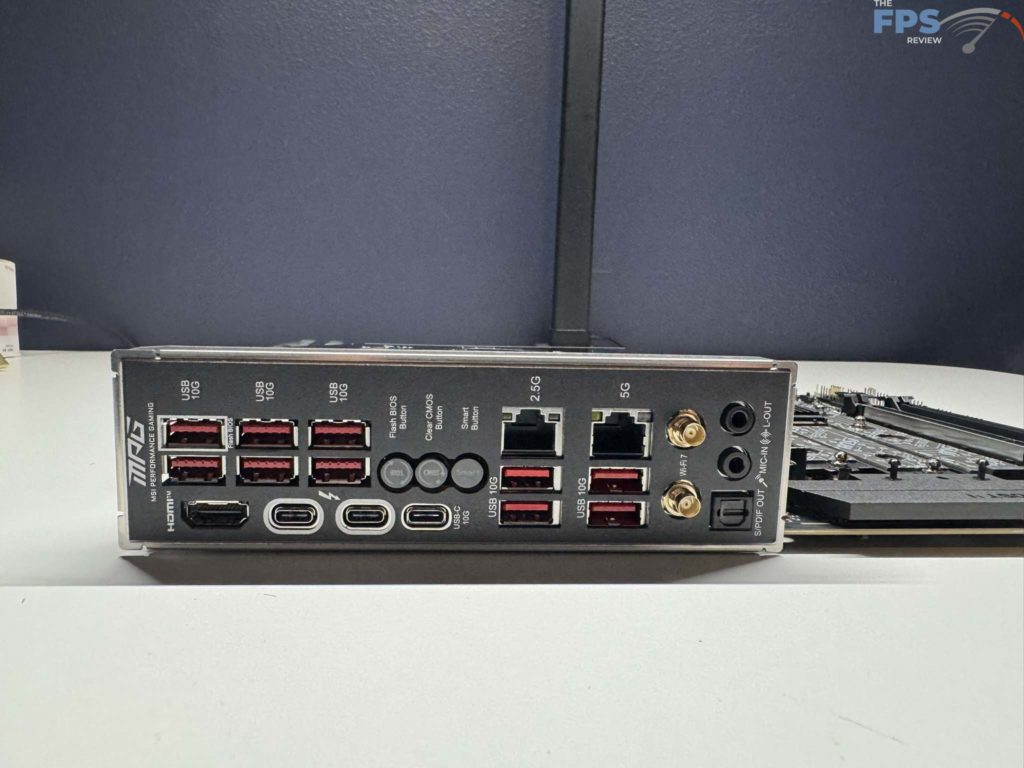
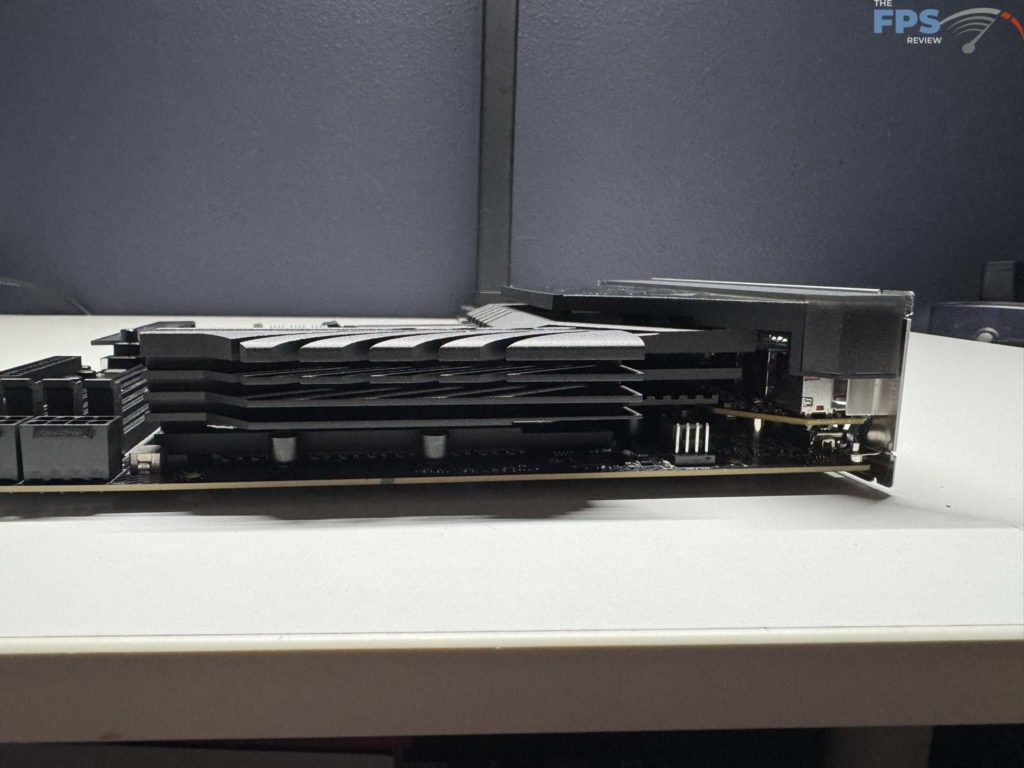
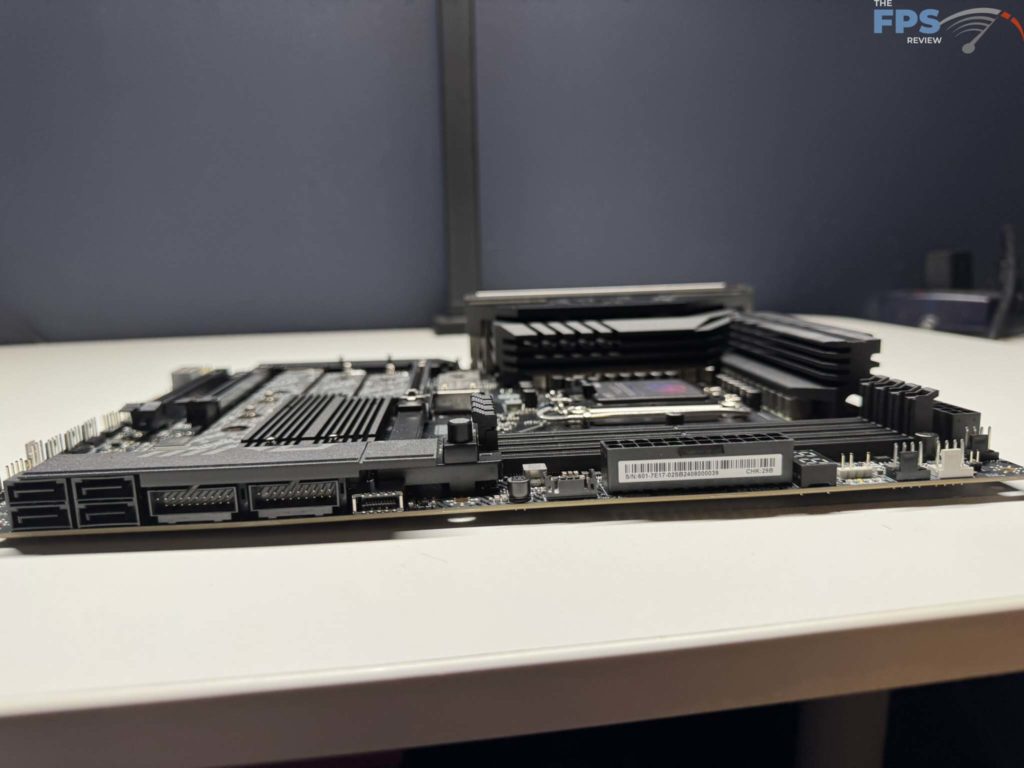
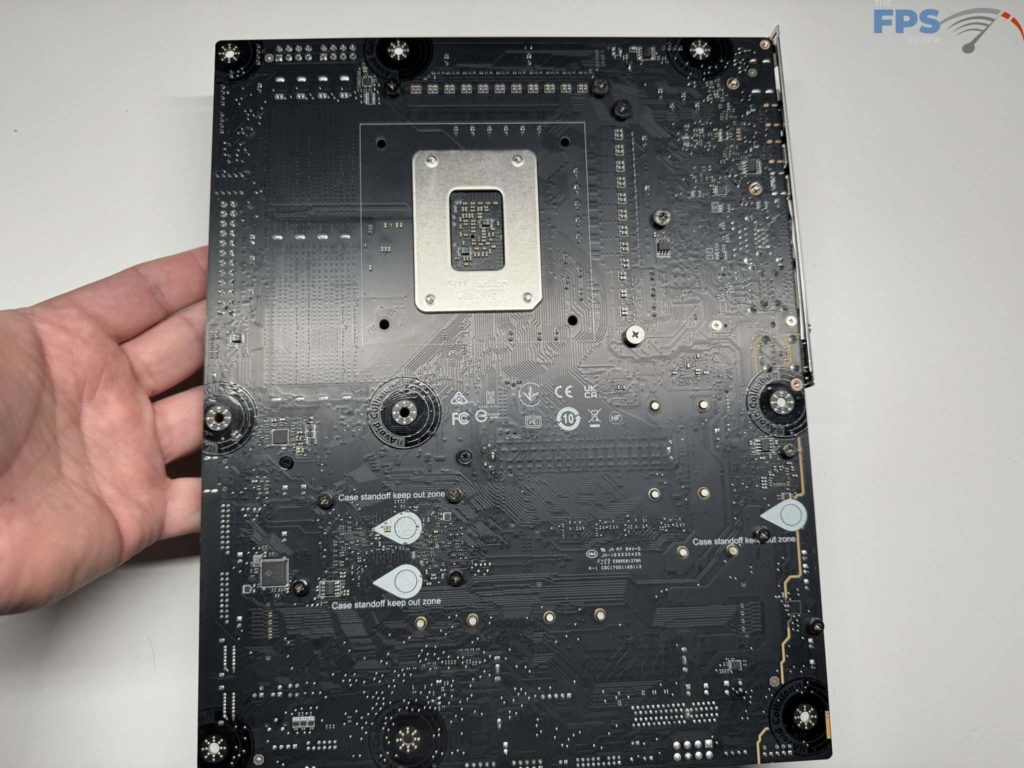
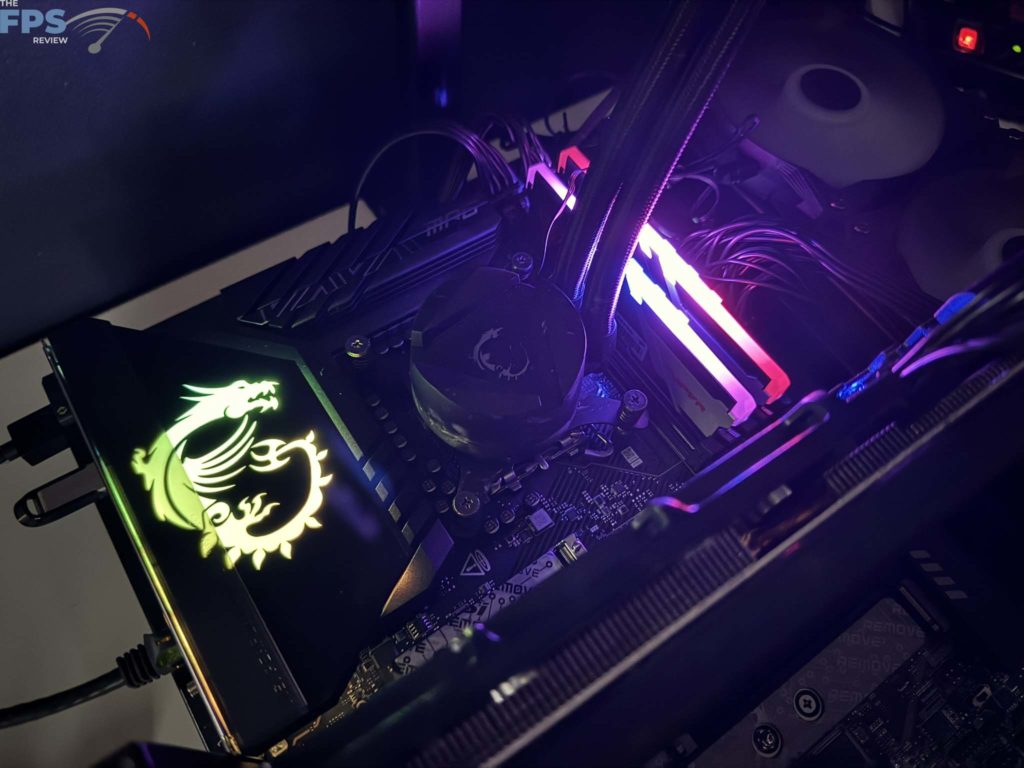
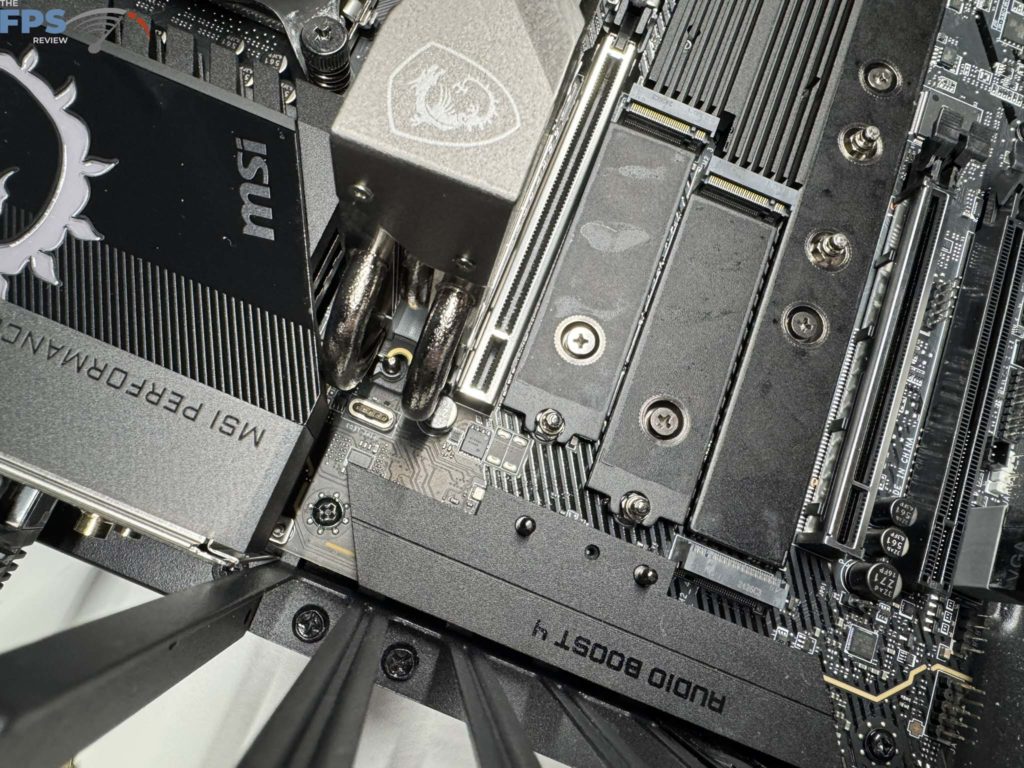
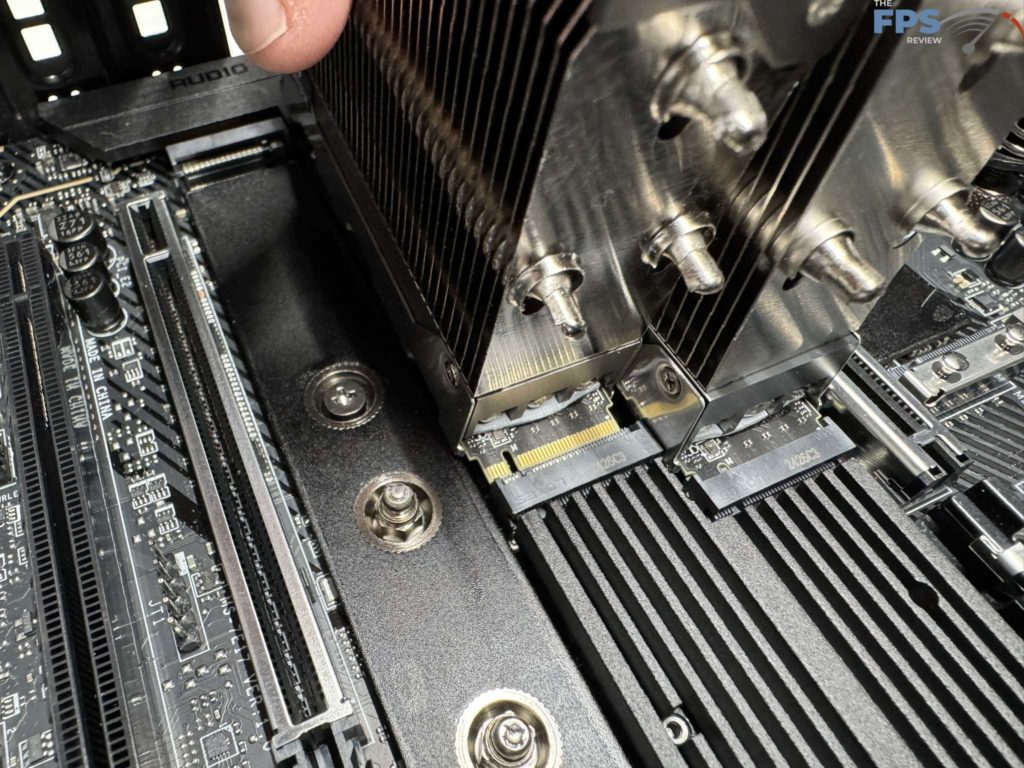
UEFI
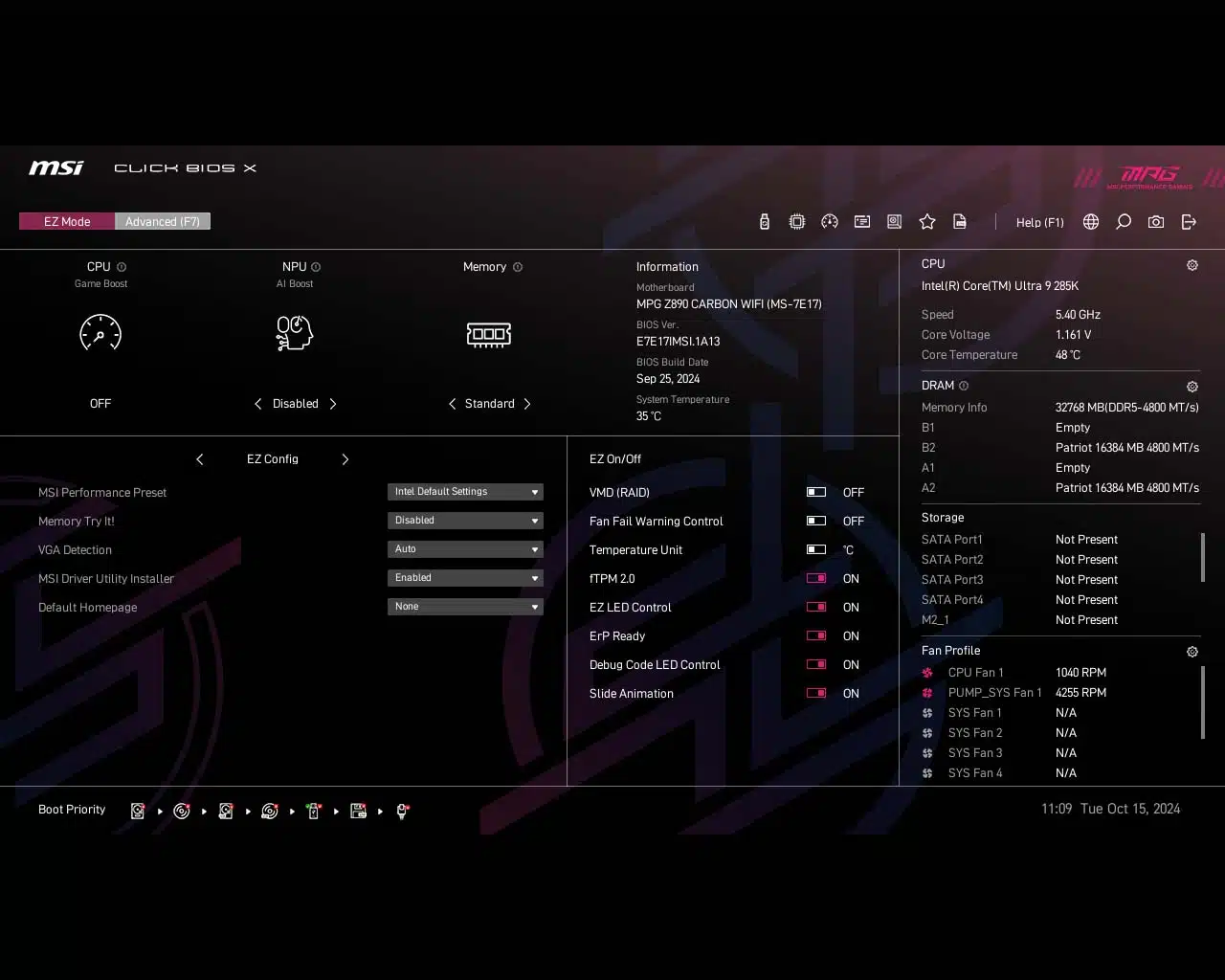
MSI has gone with a 256 Mbit AMI UEFI BIOS as we typically see, and will be relatively familiar to most of our readers. When you first enter the BIOS you will be greeted by the EZ Mode of MSI’s CLICK BIOS X. This page will show you general information at a glance such as your memory speed, the BIOS version, temperatures, fan speeds, CPU’s speeds, as well as some performance pre-sets provided by MSI.
From here we easily set our memory to its XMP-1 setting for full speed, as well as adjusted all fans and pumps to operate at 100% speed for our testing. MSI also provides four (4) performance pre-sets, for the purpose of testing we have left it at Intel’s Default Settings on power limits. After this you have the opportunity to adjust the front reset button and the rear “Smart Button”, both can be set to either Reset the computer, turn LED’s on or off, or perform a Safe Boot. One last interesting option we want to point out on the EZ Mode page is there is the ability to see the BIOS Log, which lists all changes you have made in the UEFI.
You are able to enter the Advanced mode either by selecting it in the upper left corner, or by hitting “F7” similar to most other modern MSI motherboards. From here you are able to dive deep into all settings on the motherboard, from overclocking, to boot priority, to more in-depth speed readings, or voltage and temperature readings. As this is a newer BIOS setup and a new generation of Intel Chipset and Intel CPU, we have included a few more screenshots than typical in our gallery below for you to review, however outside of the overclocking tab there is not much new to see. In the overclocking section you can still choose one of MSI’s Performance Preset’s, or you can go deep and adjust any frequency, ratio, or limit you can imagine for the CPU.
One last thing we want to mention, for whatever reason even though this is a graphical UEFI BIOS, we were unable to use anything other than our keyboard to navigate. This seems to be more of an MSI Click BIOS X issue, than an Intel Z890 issue, as the same issue was persistent on the MSI MPG X870E CARBON WIFI we reviewed on its release.
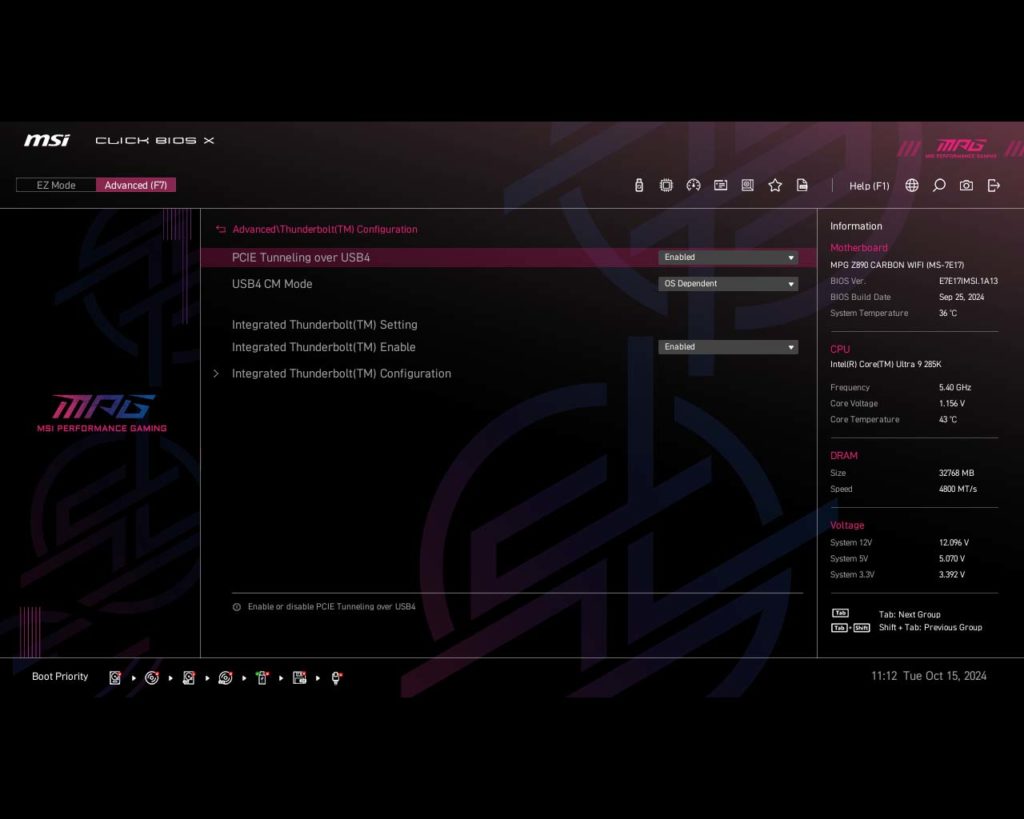
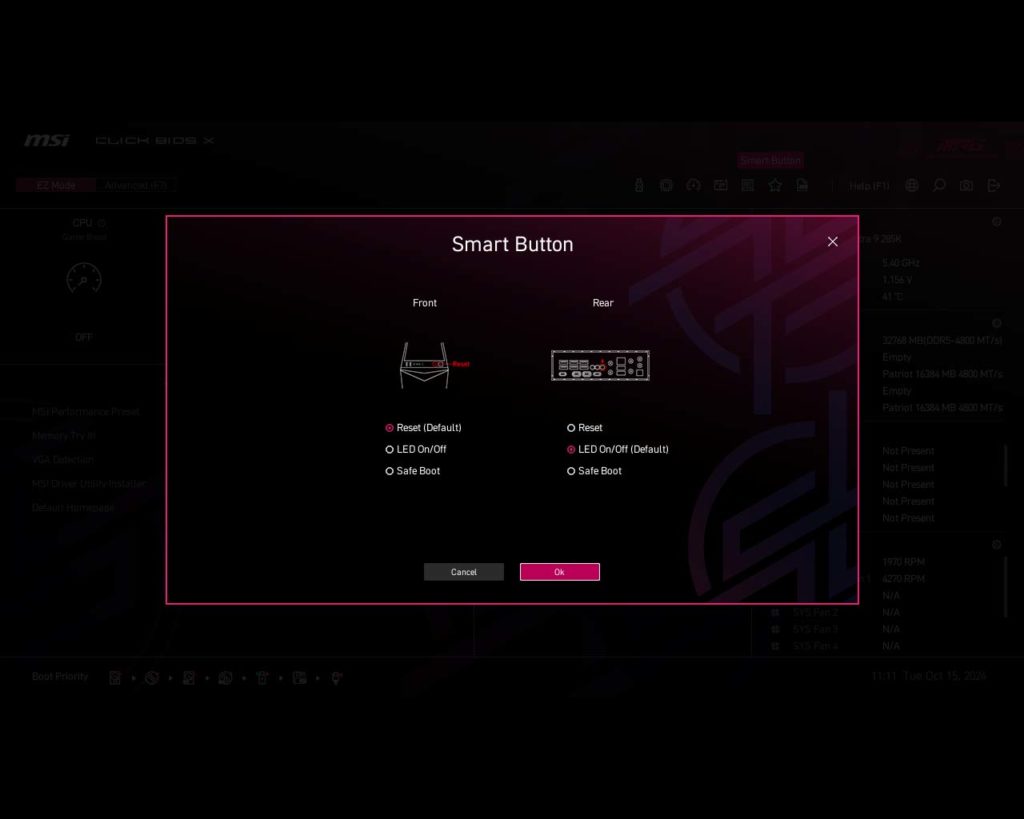
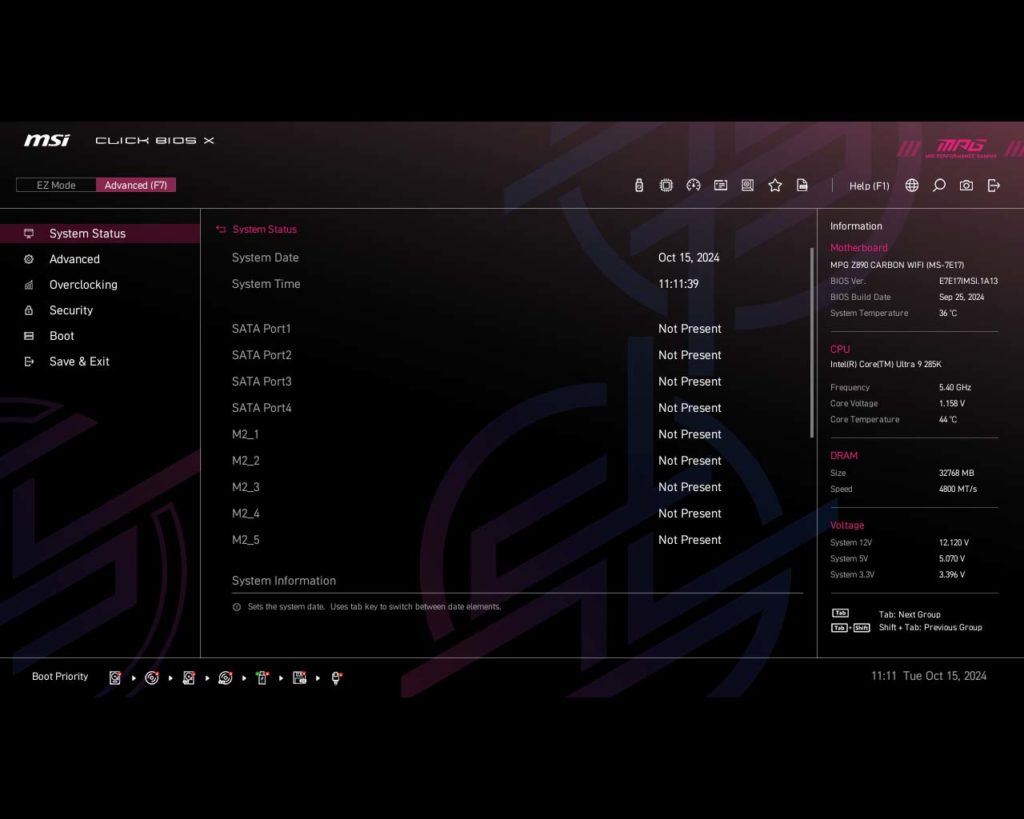
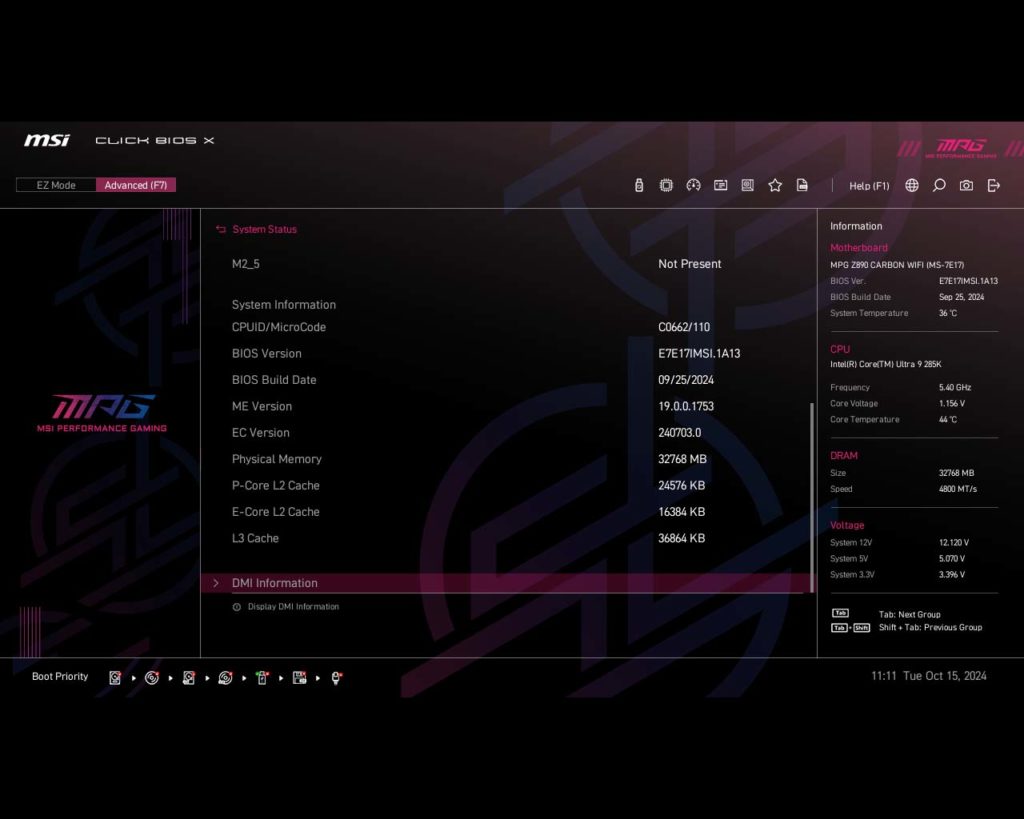
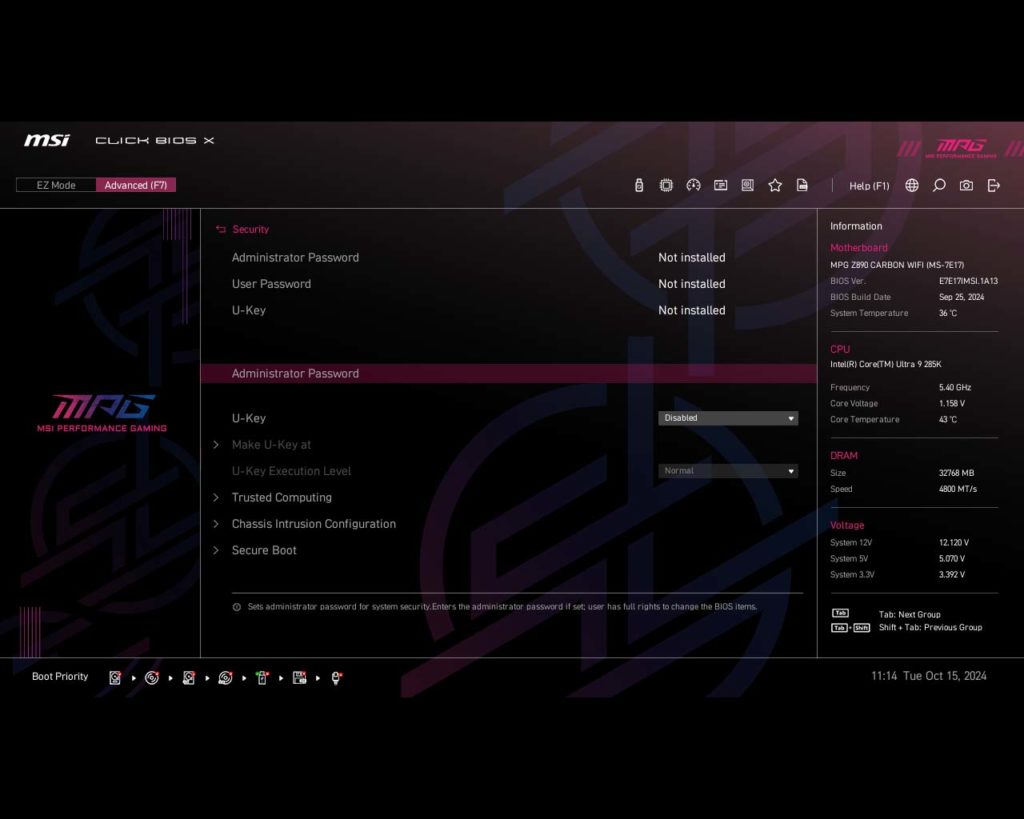
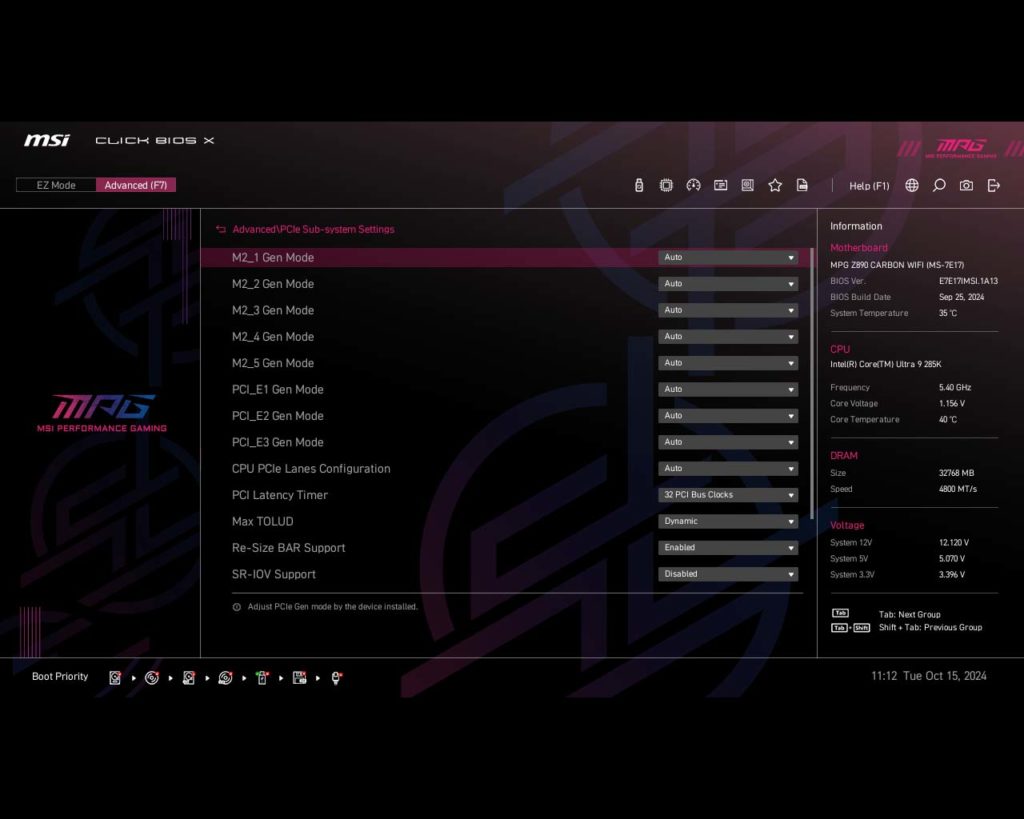
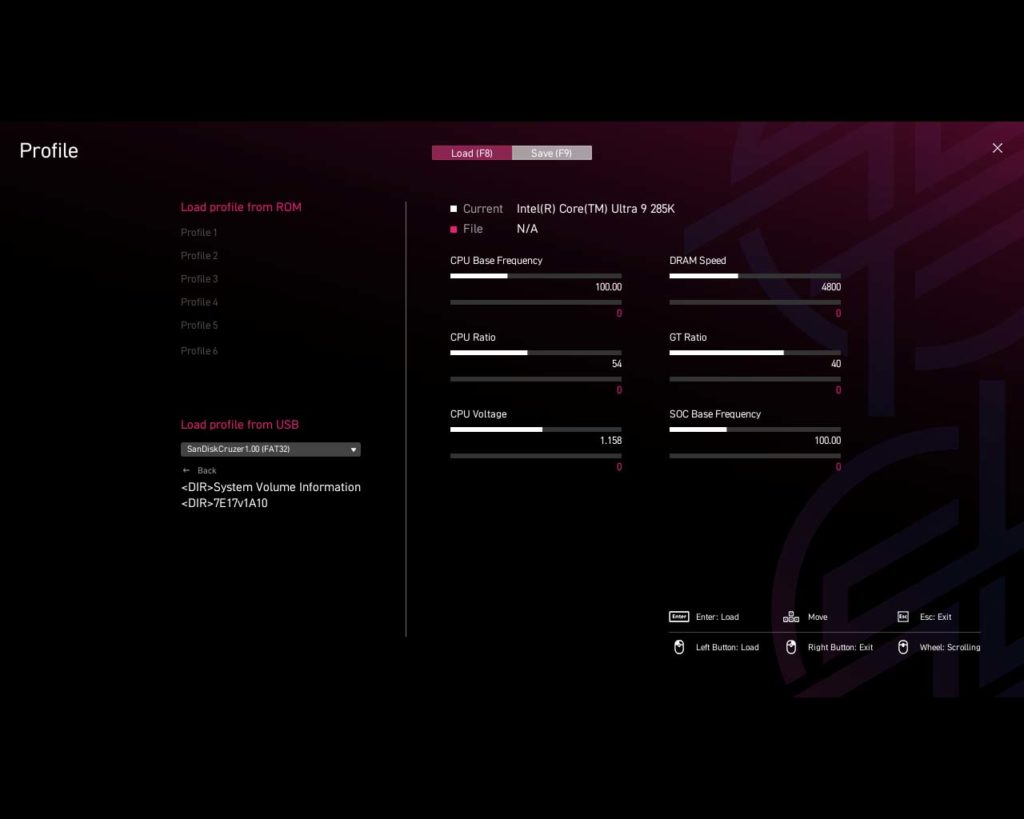
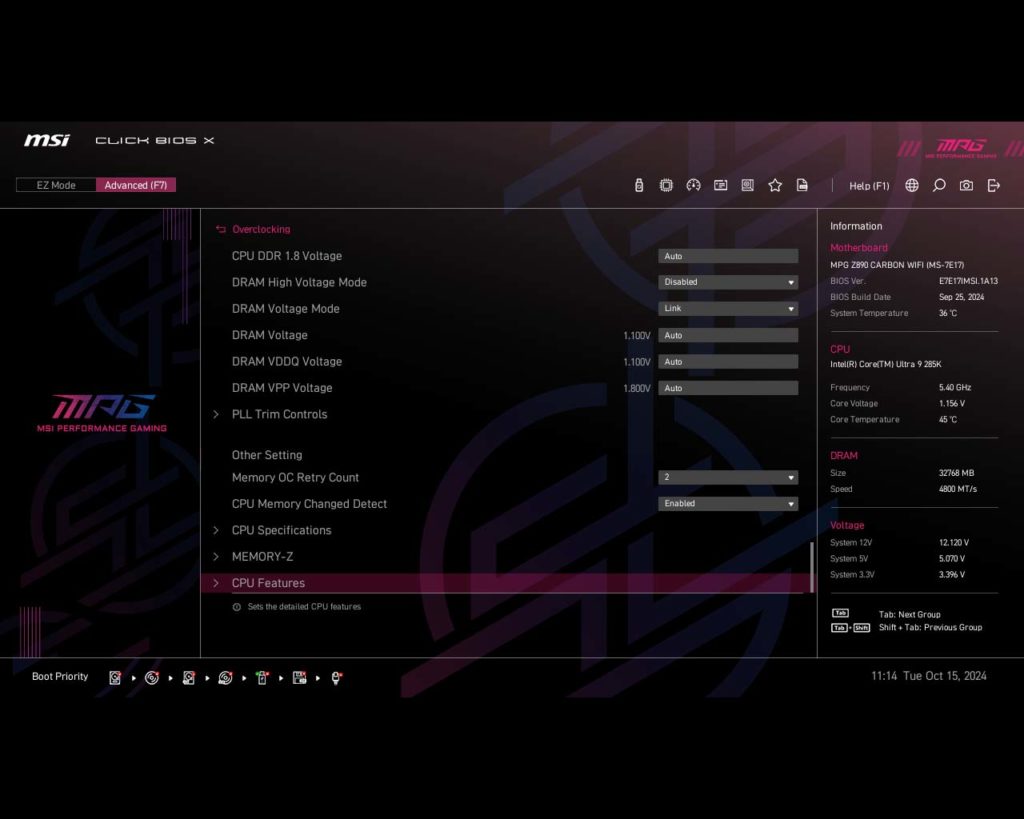
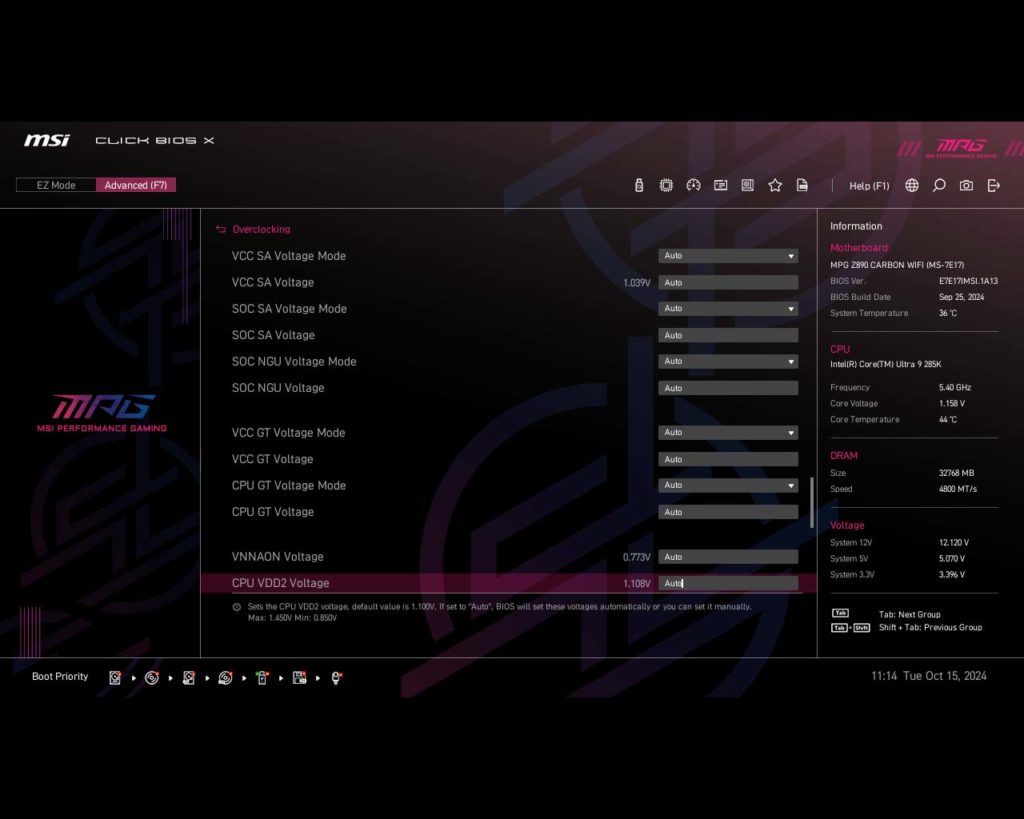
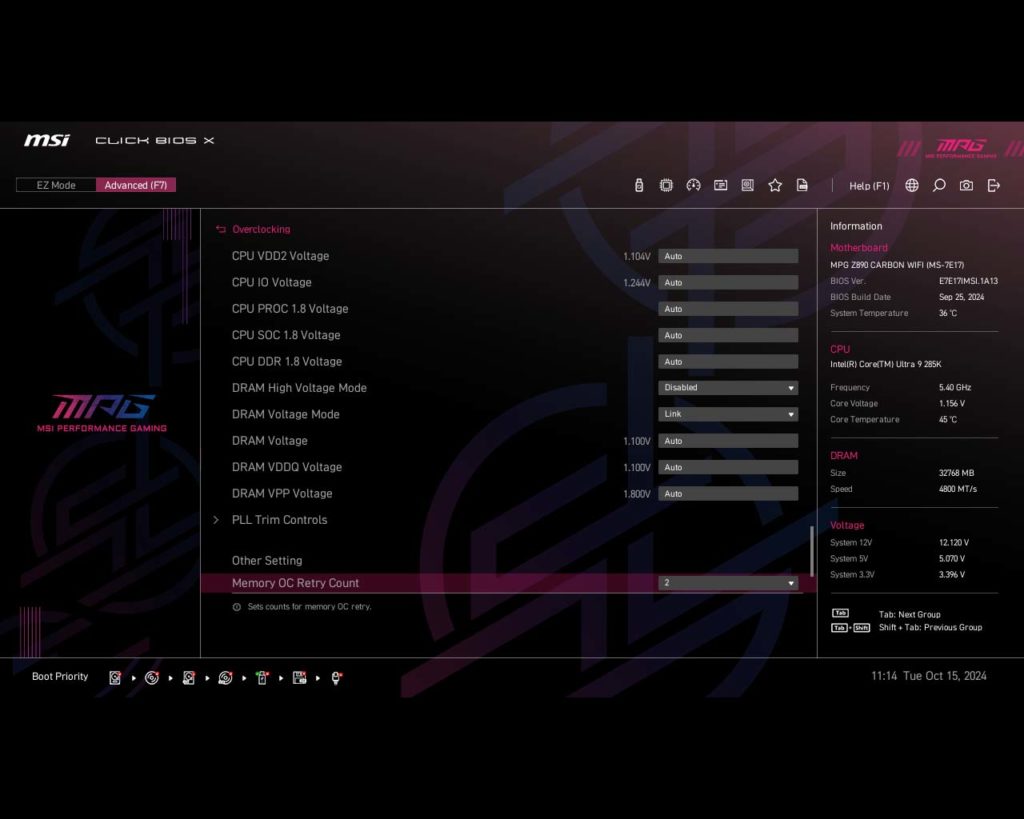
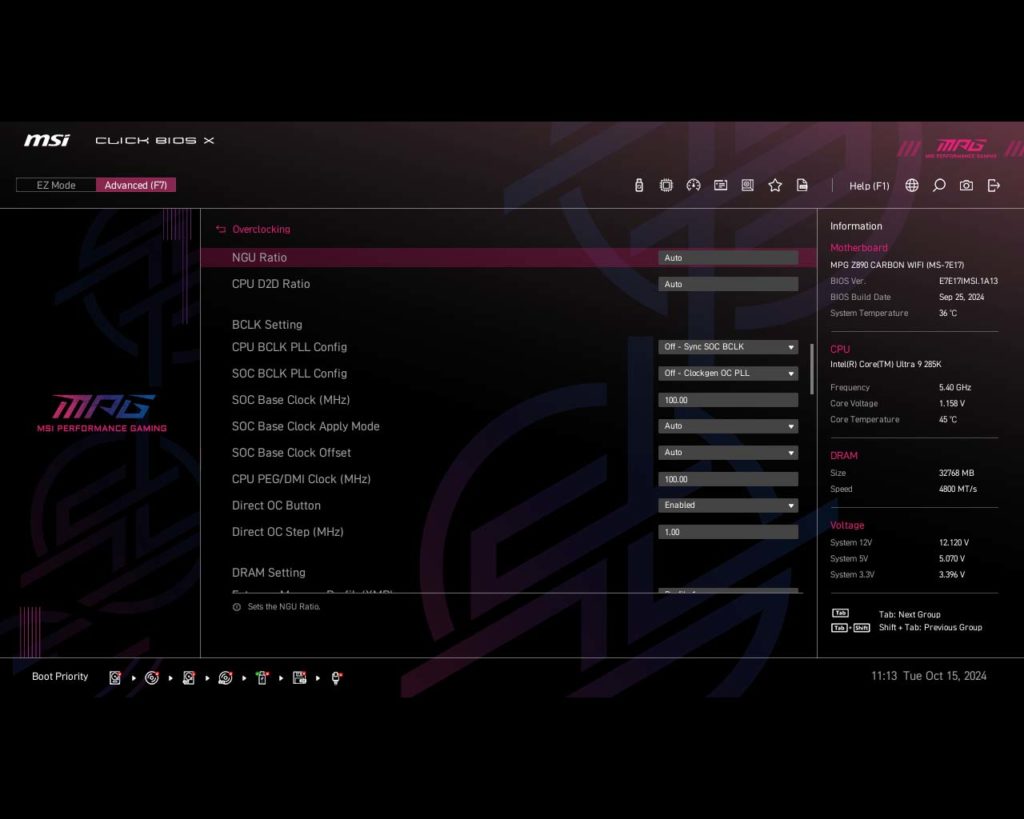
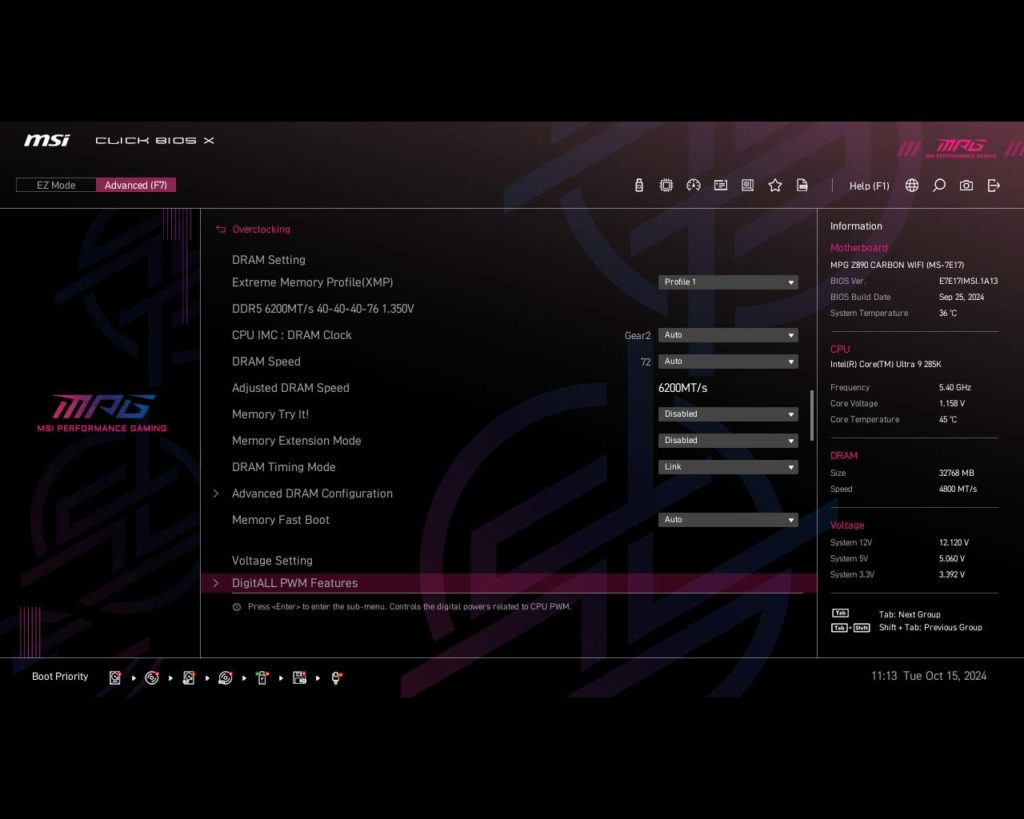
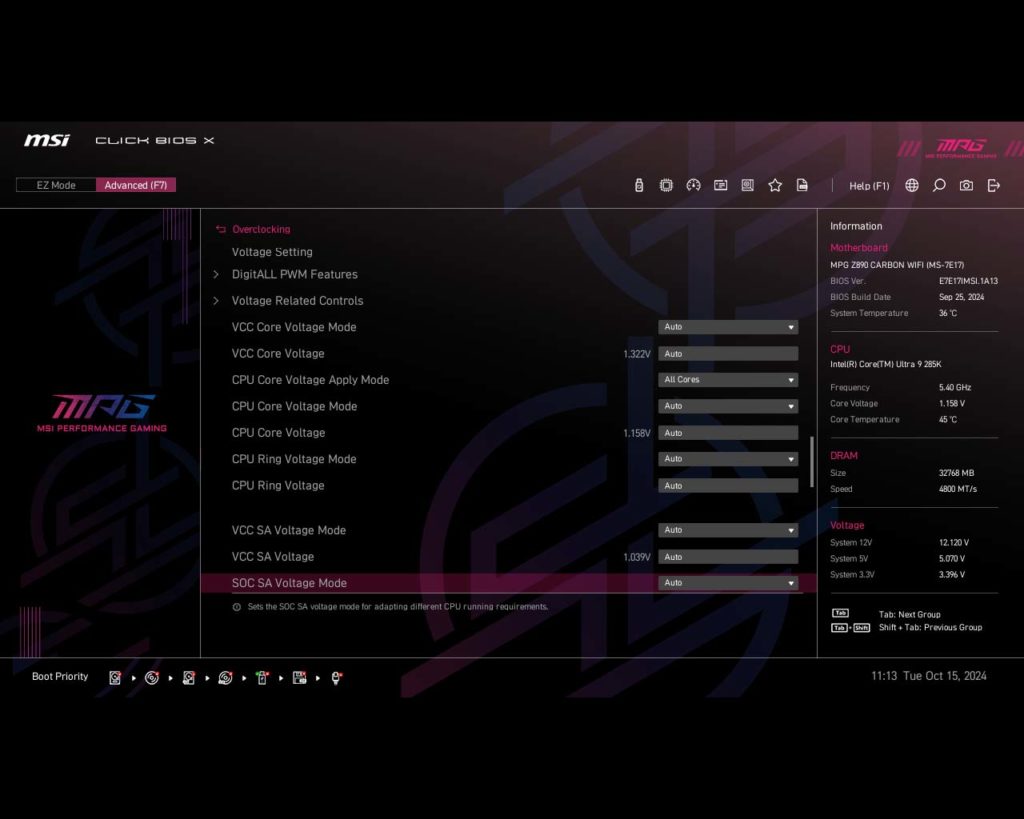
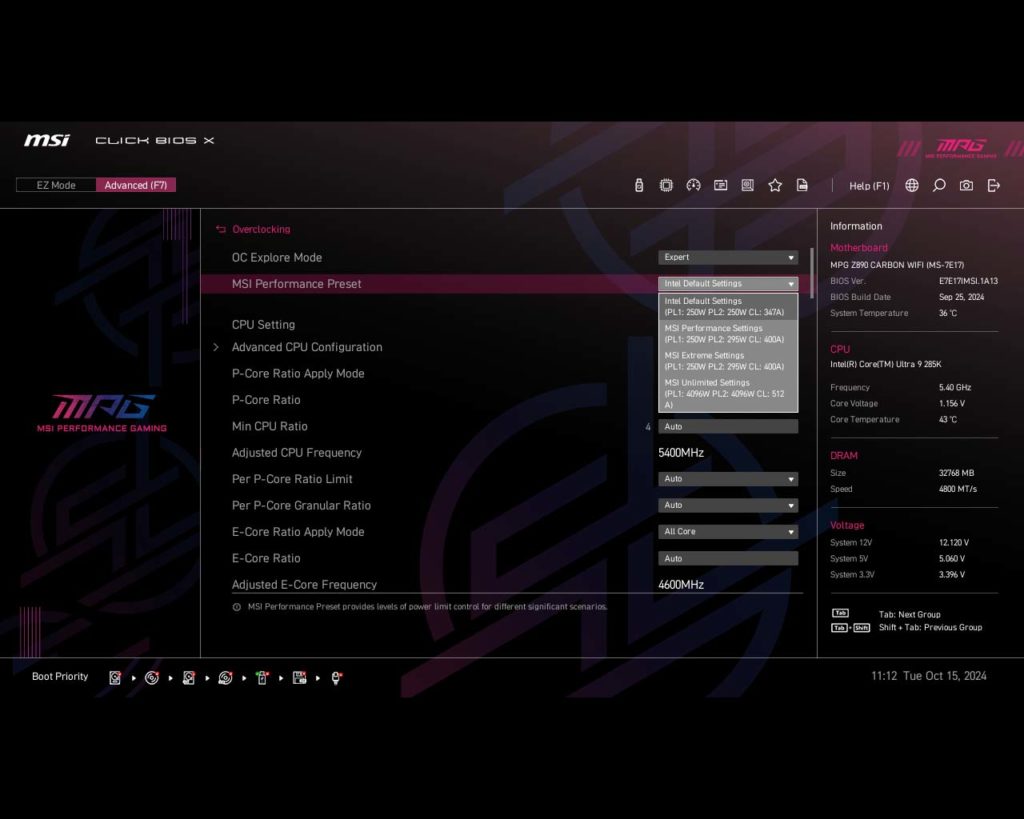
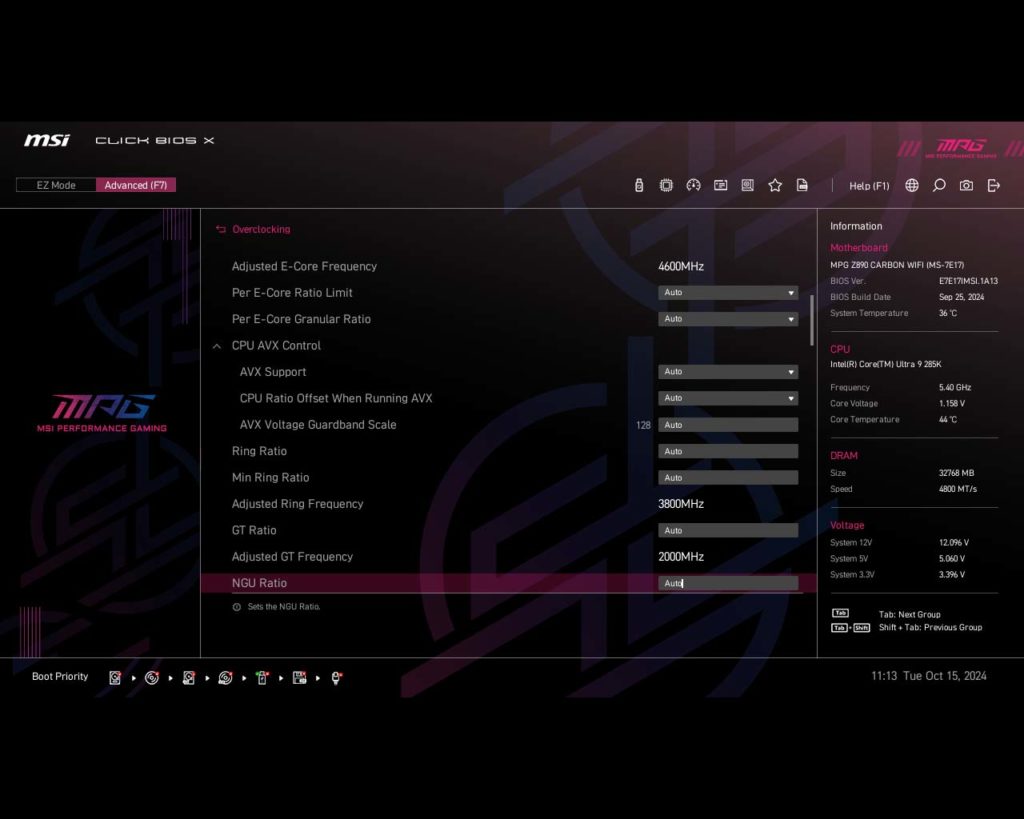
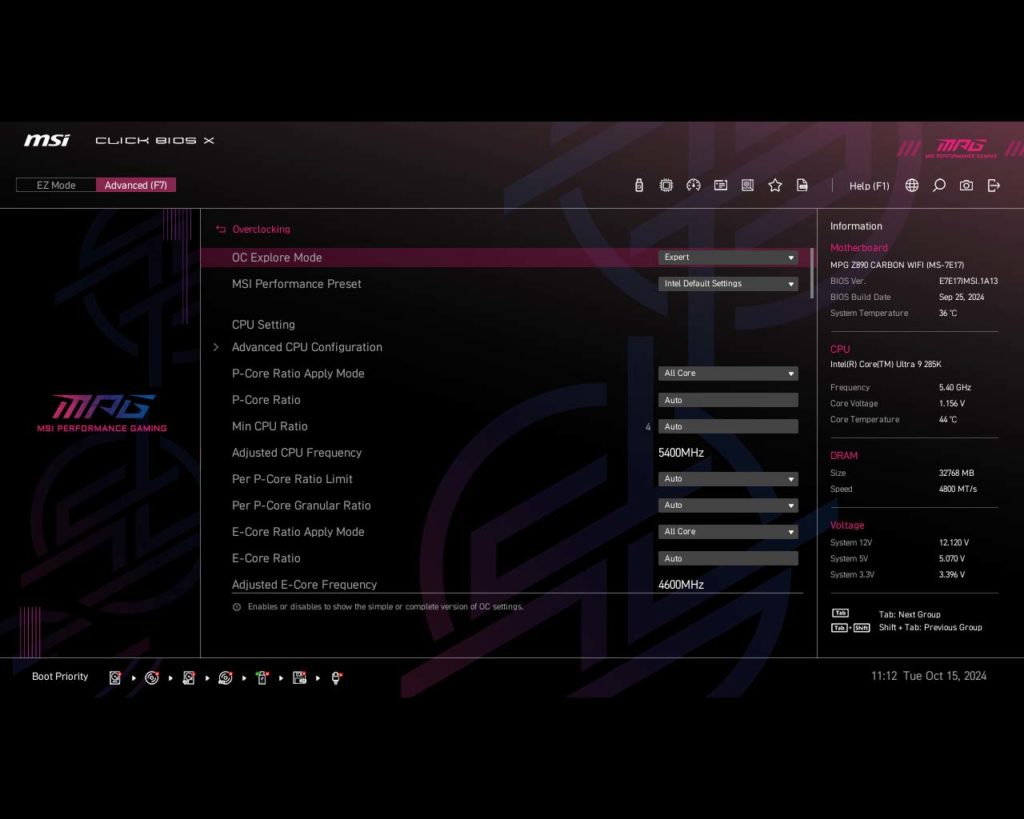
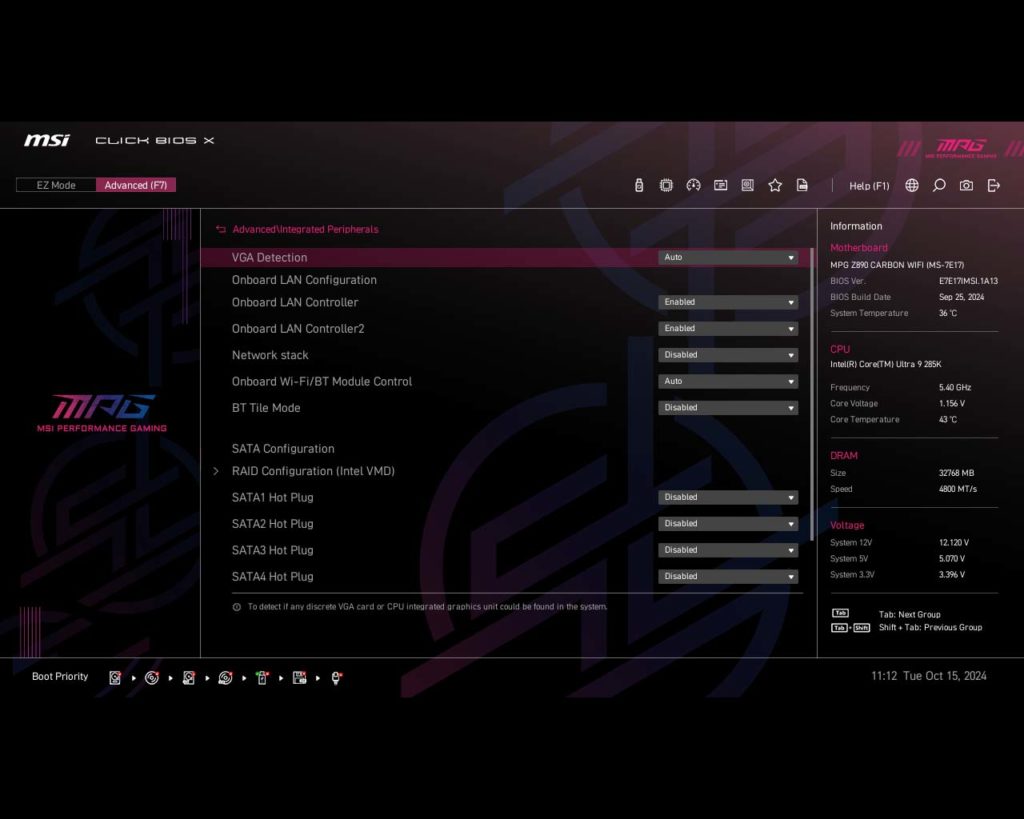
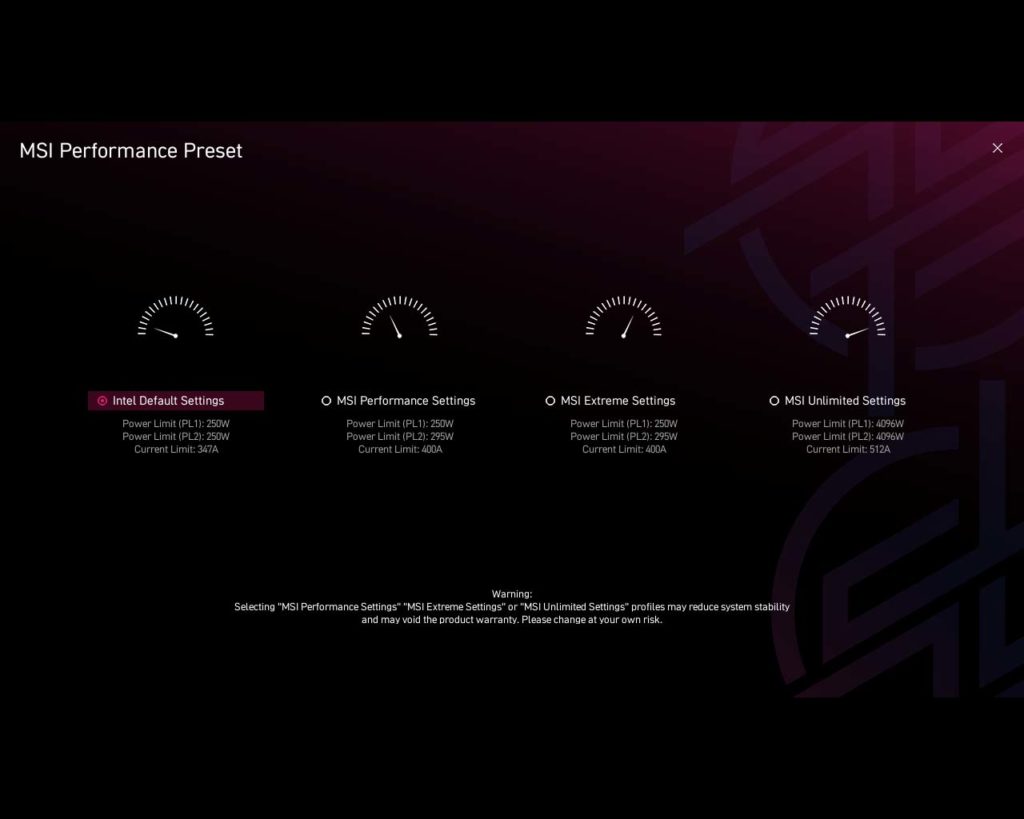
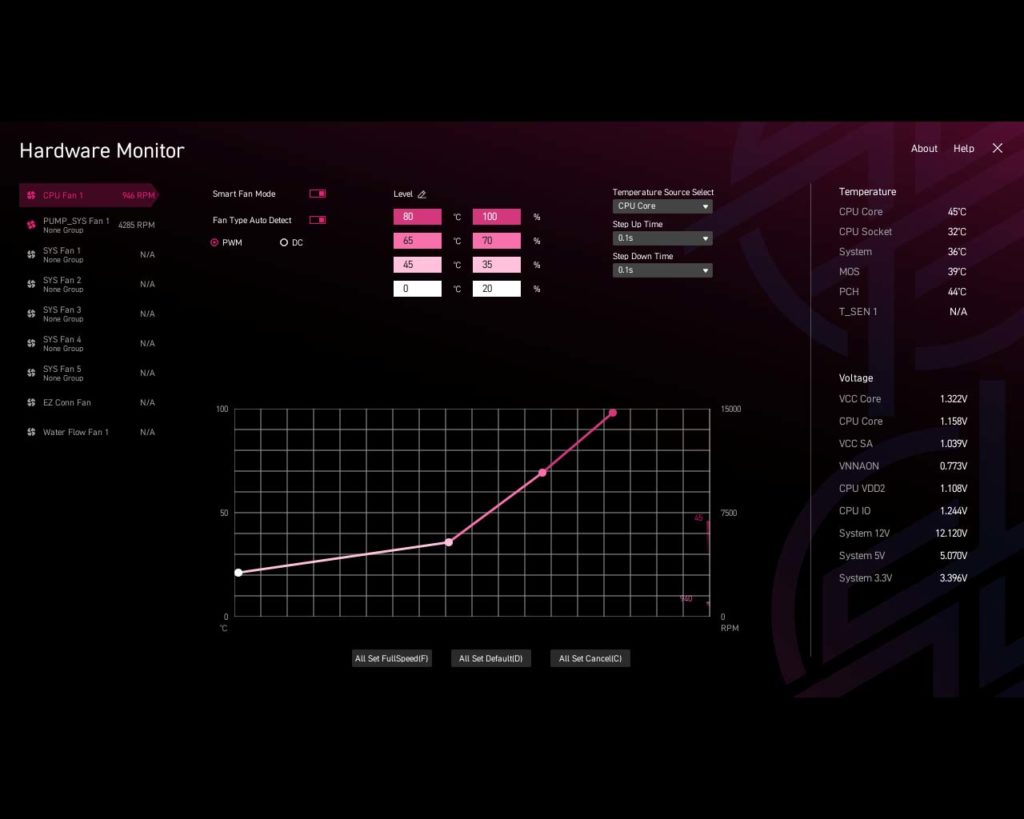
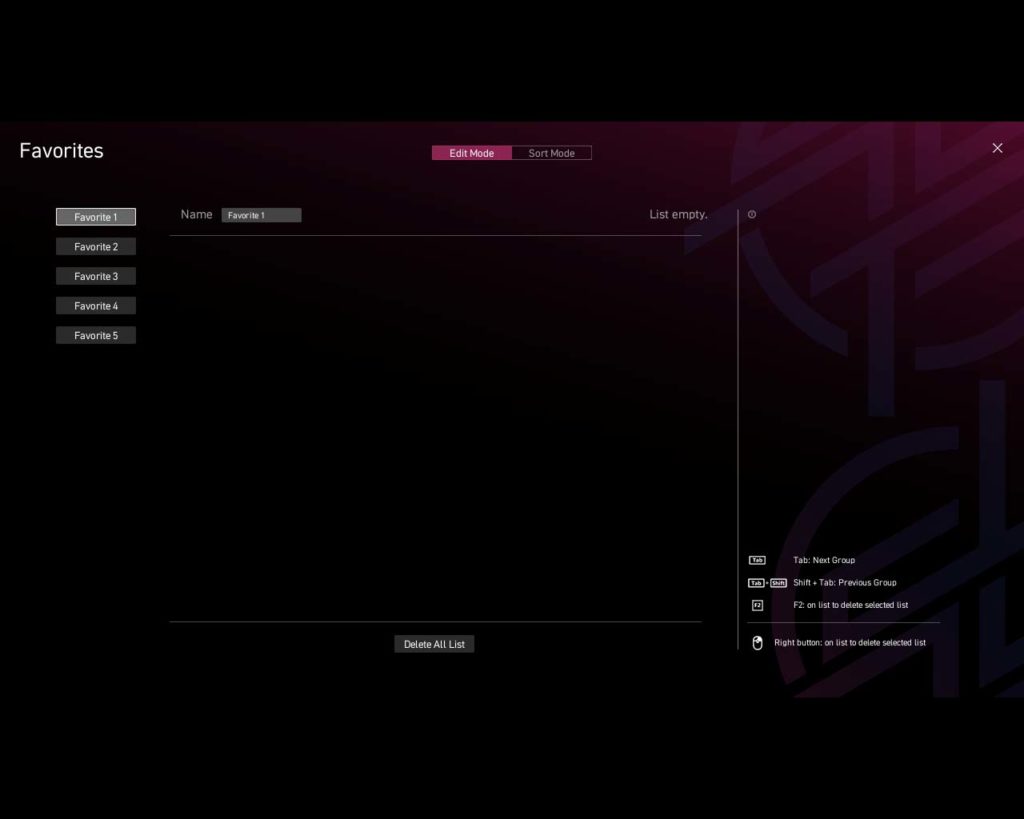
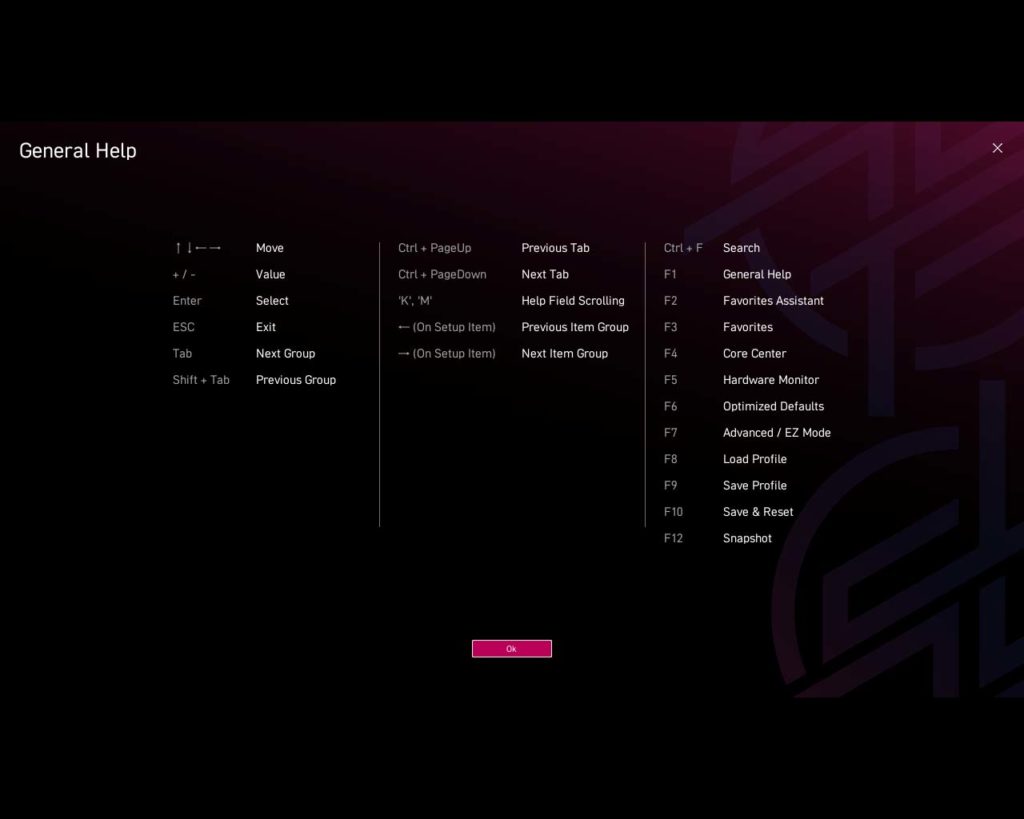
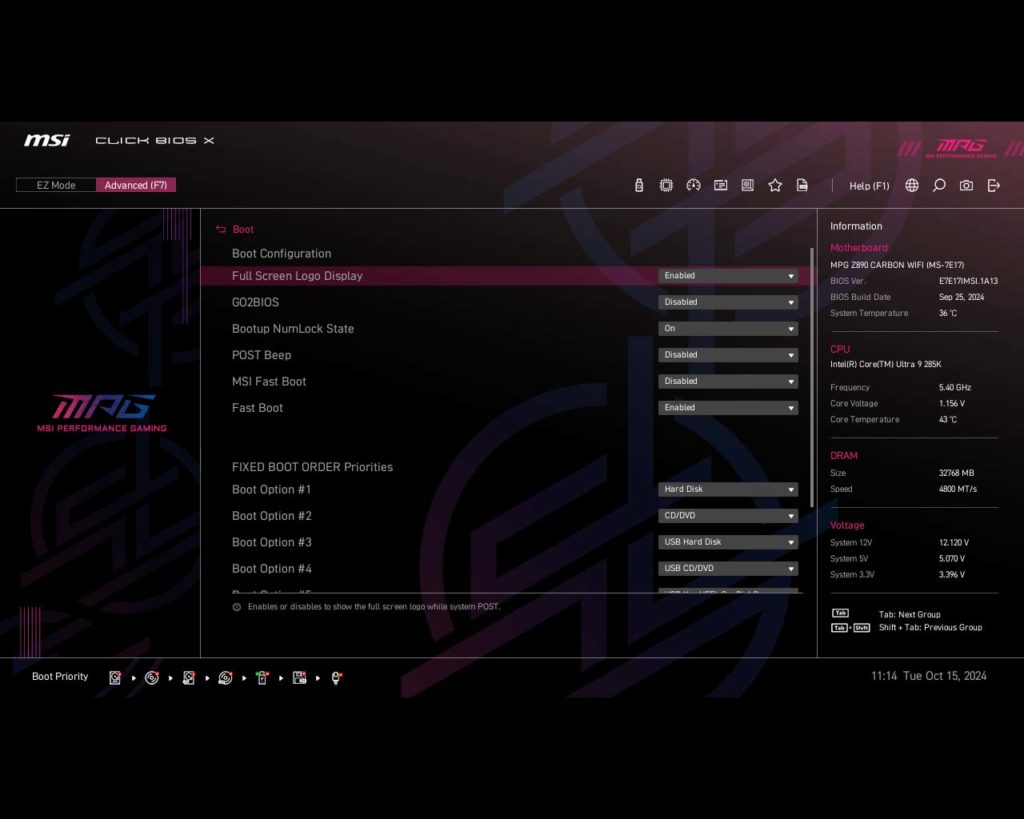
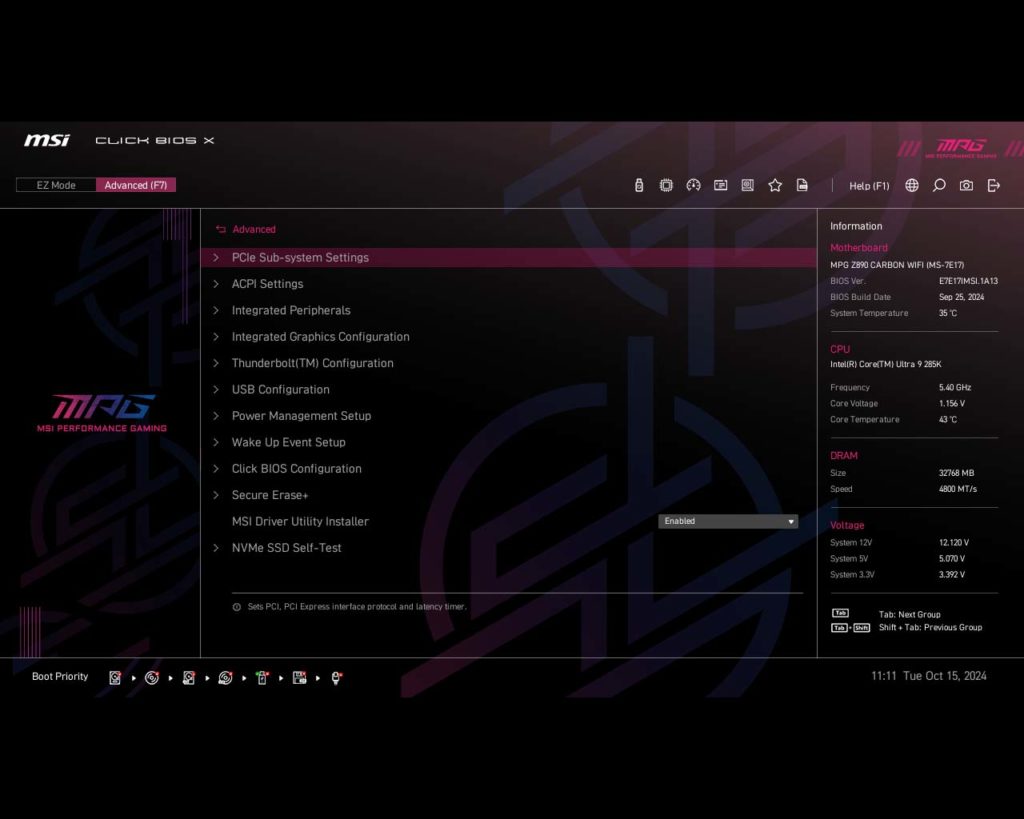
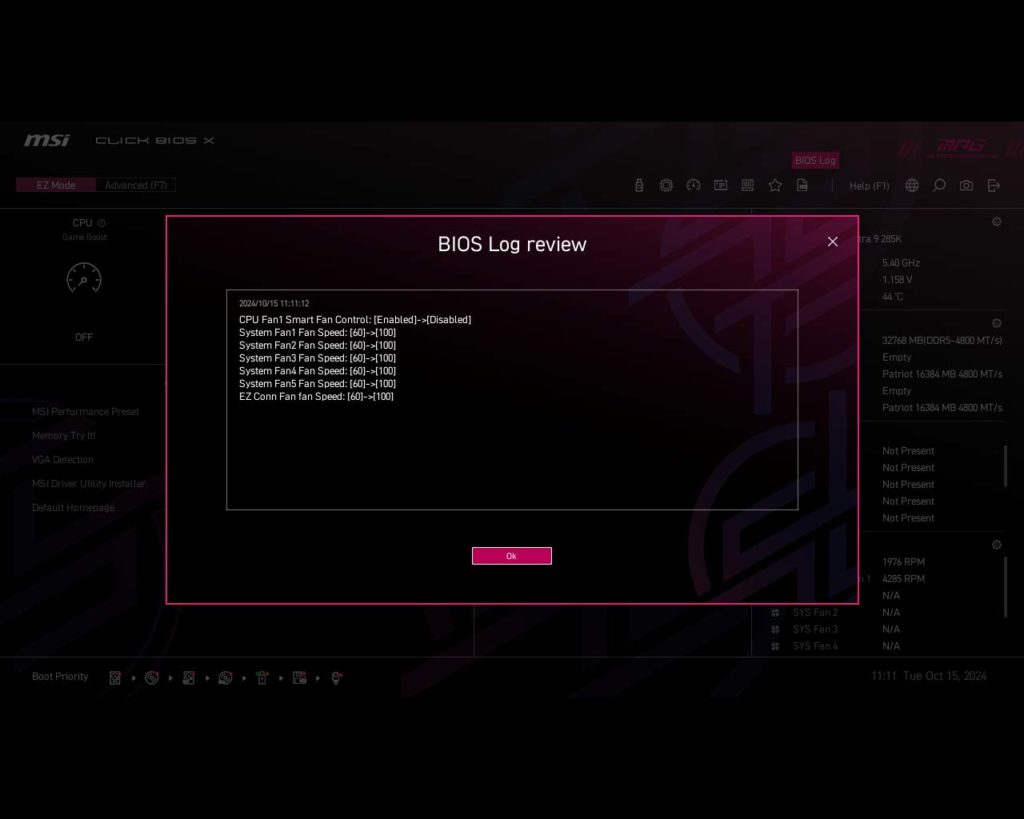
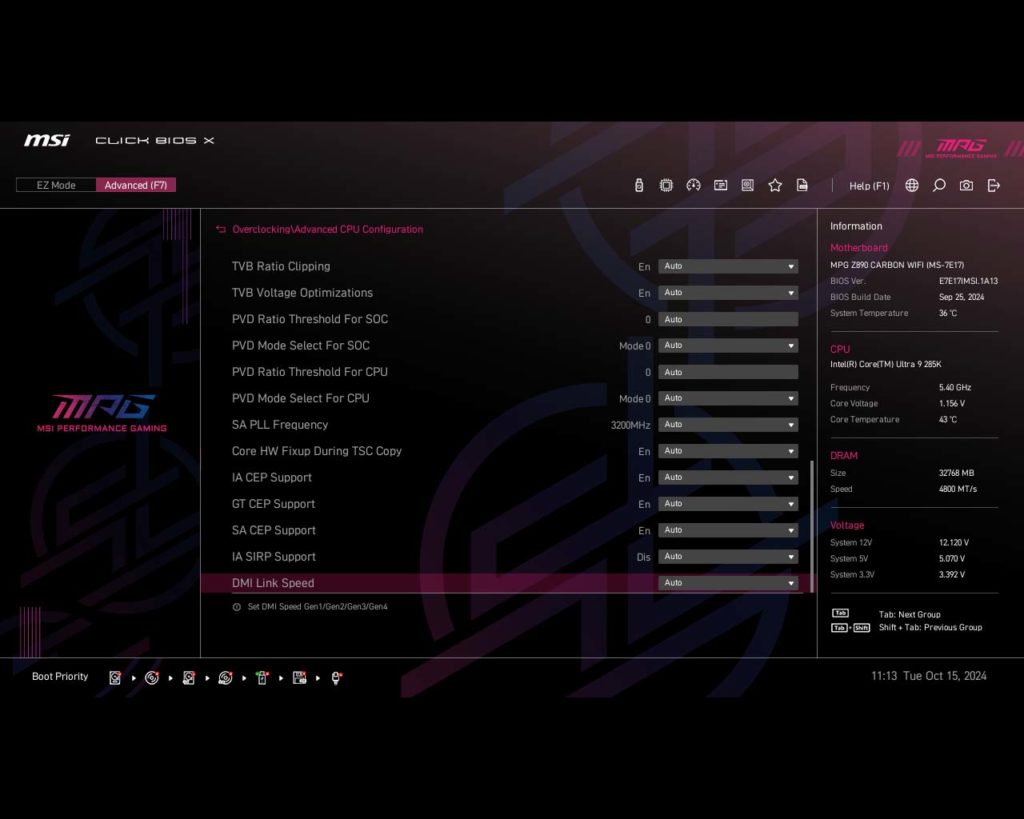
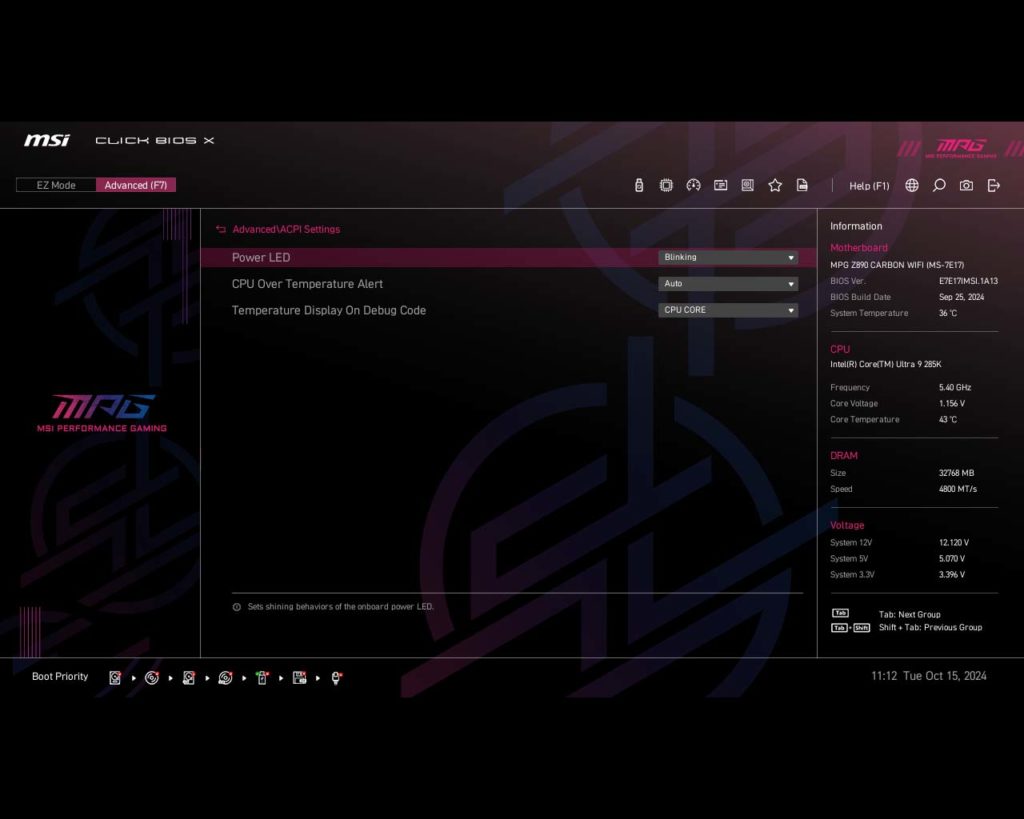
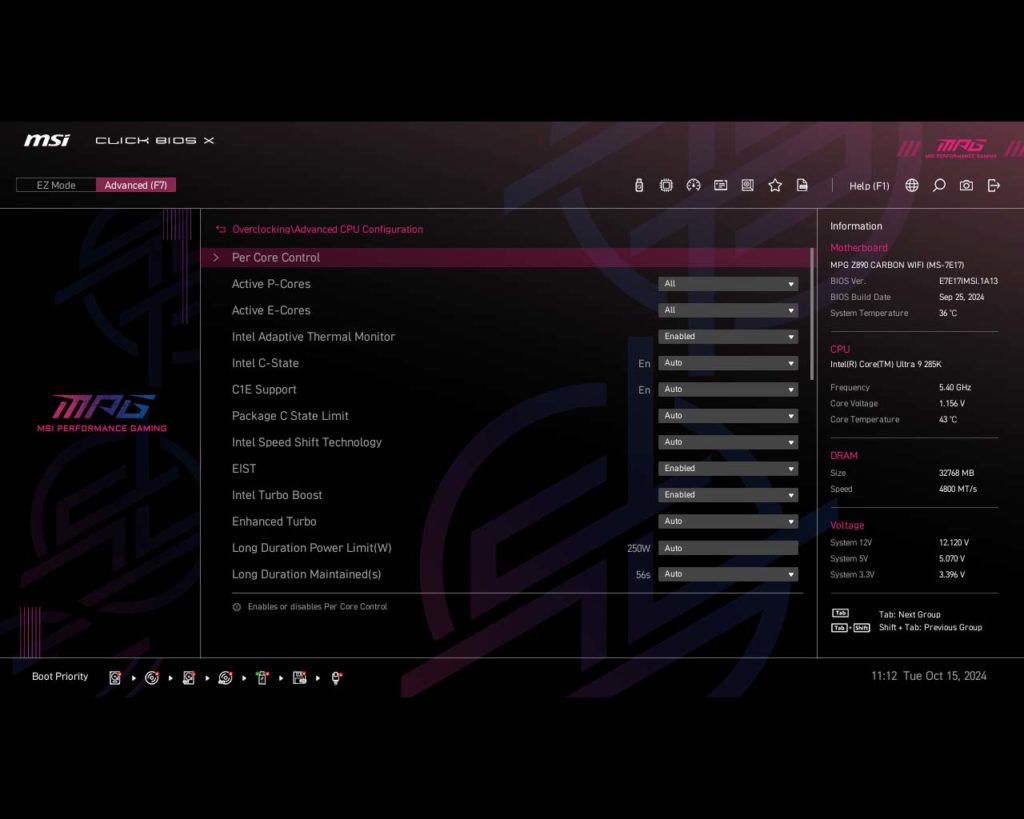

M.2 Performance
Starting with the new generation for both AMD and Intel we have decided to upgrade our M.2 NVME testing procedure. As with other reviews we will be using the MSI SPATIUM M580 FROZR (originally reviewed in early 2024) however due to installation issues limiting our ability to run any drive in the M.2_1 slot we will not be testing this motherboard with the MSI SPATIUM M570 PRO FROZR (originally reviewed at the end of 2023). For today’s testing, we ran the M580 in the M.2_2/3/4/5 slot individually to confirm that the Gen4 slots are able to max out the speeds. As expected all of the slots are able to maintain around 7,128.4 MB/s read, and 6,999.4 MB/s which is right around the maximum Gen4 speeds we will see.
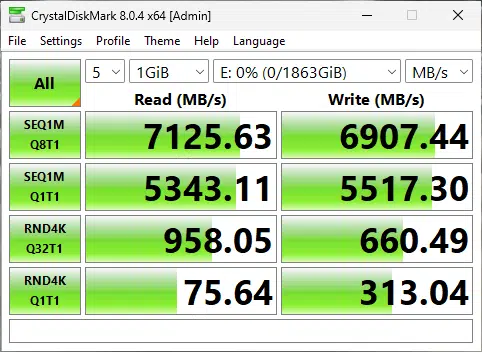
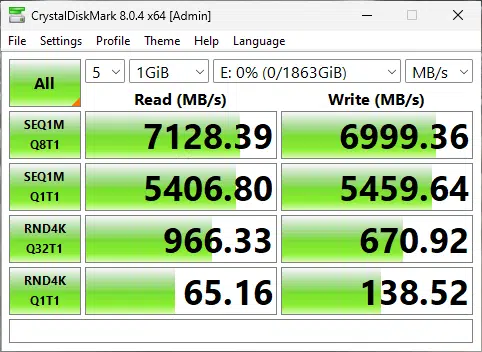
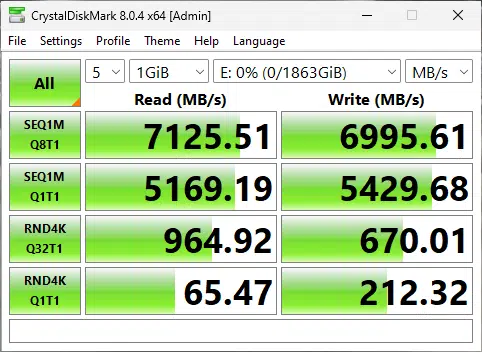
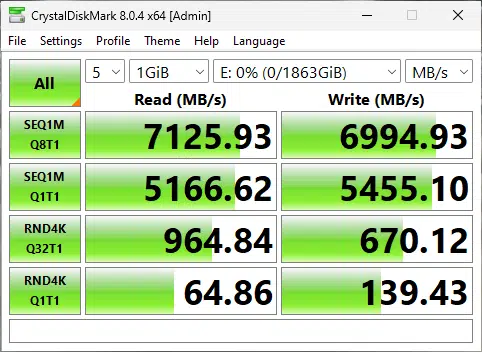
Memory Bandwidth
With our memory tests we are going to be performing a slightly different benchmark test going forward, instead of performing the AIDA64 Read and Write tests individually, we will be performing the AIDA64 Cache & Memory Benchmark going forward. With the Intel Core Ultra 9 285K, the MSI MPG Z890 CARBON WIFI, with all UEFI settings at default with the exception of our memory being set to 6200MHz, we have a read performance of 94,471 MB/s, a write performance of 84,314 MB/s, and new for this generation, a copy speed of 87,871 MB/s. Take a look at the below for a screenshot to see the full results of Cache speeds, and further information on the speed settings of our hardware.
PCMark 10
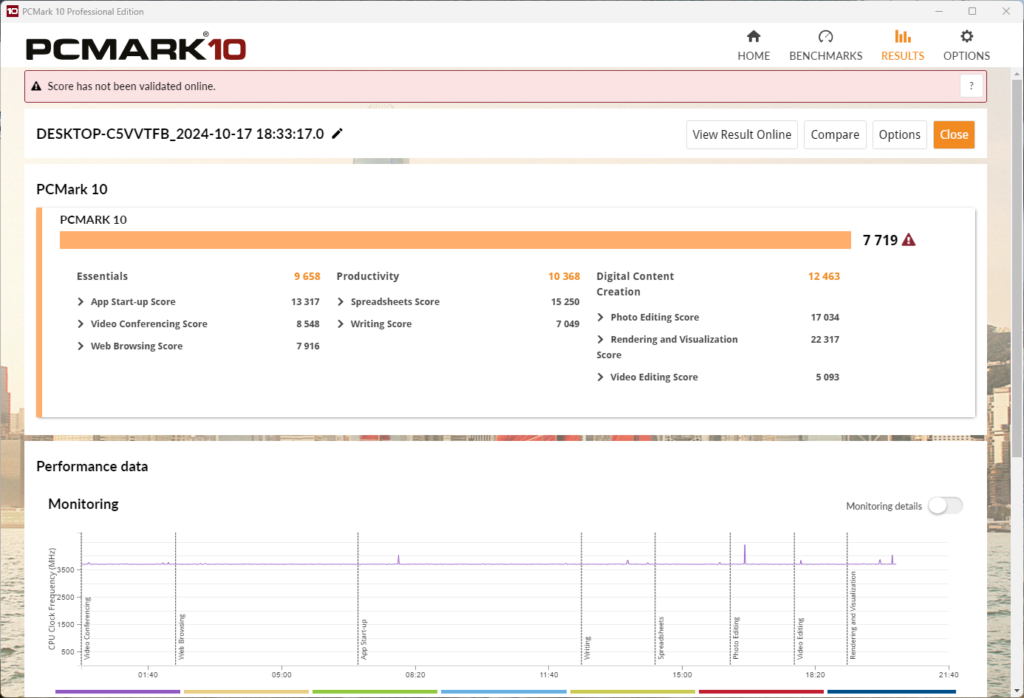
With the Intel Core Ultra 9 285k, the MSI MPG Z890 CARBON WIFI is able to achieve a score of 7,719 in our PCMark 10 full-system benchmark. The CPU frequency responded as we expected, and this is a score in line with what we expected from this motherboard and CPU combination. With this being a new platform and generation of CPU we do not have a large enough data set at this point to determine if this is a good or bad score, however, it compares slightly worse than the previous generation Intel CPUs.
Cinebench R23
We ran the Cinebench R23 multi-core test multiple times, and consistently scored around 39,655, and when we did the same for the single-core test we scored around 2,337. With this being a new platform and generation of CPU we do not have a large enough data set at this point to determine if this is a good or bad score, however, it compares favorably to the previous generation Intel CPUs.
Blender Benchmark
With Blender, we were able to achieve 263.48 samples per minute for the monster test, 171.78 for junkshop, and 126.98 for the classroom tests. With this being a new platform and generation of CPU we do not have a large enough data set at this point to determine if this is a good or bad score, however, it compares favorably to the previous generation Intel CPUs.
3DMark
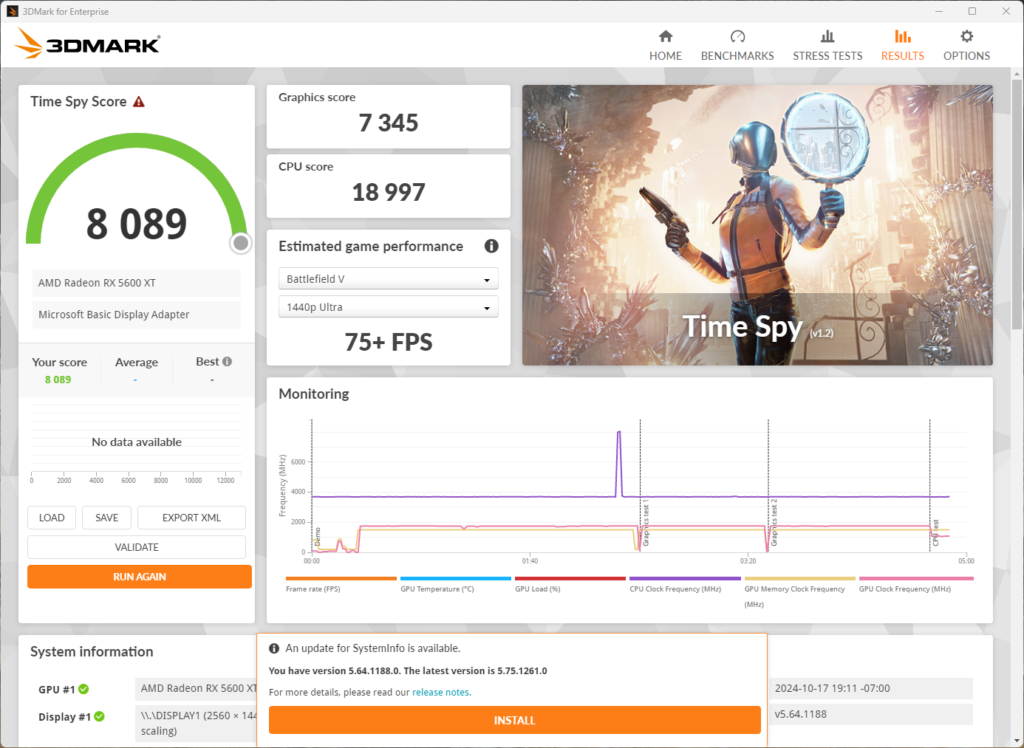
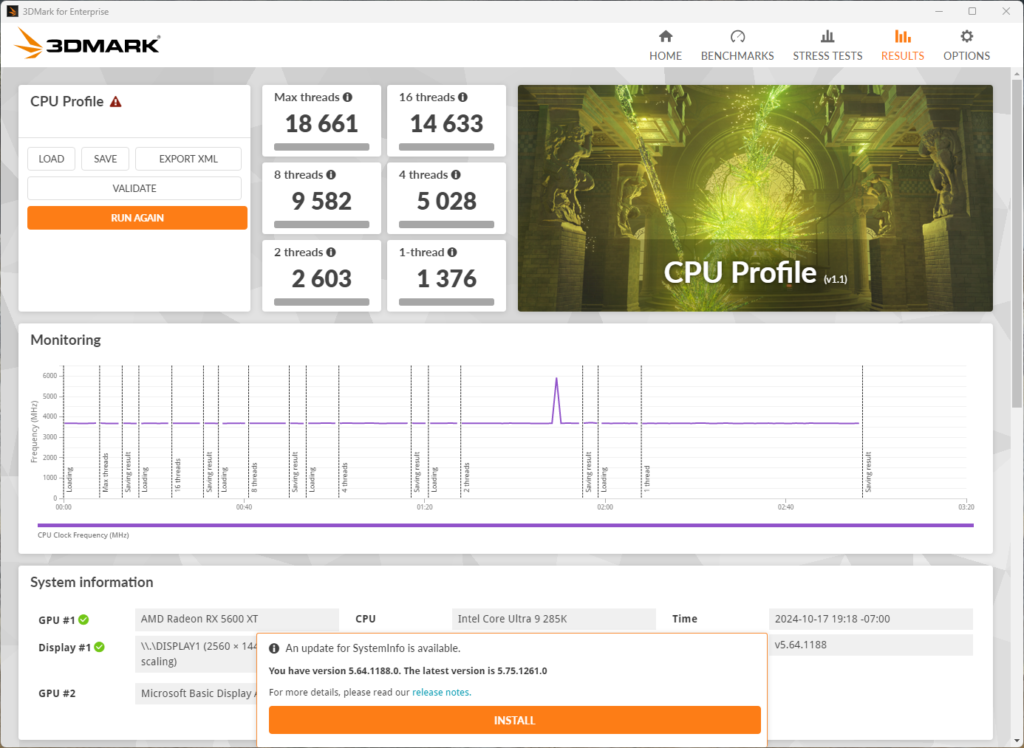
We ran both Time Spy and the CPU Profile tests with 3DMark. With the Time Spy test, we achieved a CPU score of 18,997, and for the CPU profile on max threads, we achieved 18,661. With this being a new platform and generation of CPU we do not have a large enough data set at this point to determine if this is a good or bad score, however for Time Spy the i7-14700K scored a bit higher, while the CPU test the Intel Core Ultra 9 285K was the higher scorer.
V-RAY 6 Benchmark
VRM Temperature
With the new generation of CPU and chipset from Intel, there is an increased focus on both power draw and VRM temperatures. Due to this, we have decided to add a new test to our arsenal here at TheFPSReview, where we run Cinebench R23 for a minimum of 15 Minutes, and then record the system-reported temperature of the VRM/MOSFET area, as well as a measured temperature of the actual heatsinks themselves with a hand-held laser thermometer to find the highest temperature.
As a note, we are performing this test at an approximate ambient temperature of ~75°F (~24°C). During this test, we saw a reported MOSFET area temperature of 68°C maximum, with a recorded temperature on the VRM cooling of 56.8°C, and a 44.4°C temperature on the chipset.
Conclusion
With an MSRP of $499.99, the MSI MPG Z890 CARBON WIFI is priced near the high end of the upcoming Z890 range of motherboards, and within MSI’s own family, it sits right below the upcoming MSI MEG Z890 GODLIKE and ACE. With this cost, you are getting a motherboard with one of the more bulky, in a good way, cooling solutions, tons of M.2 storage options, a completely toolless installation of all devices, and two of the PCIe slots reinforced with metal for the next generation of GPU’s and AI chips.
Installlation and Use
We had absolutely no issues with the MSI MPG Z890 CARBON WIFI’s installation into our test bench. This is largely thanks to the attention to detail MSI has included for the DIY enthusiasts, with the inclusion of the MSI EZ M.2 Clip II system, and a re-vamped EZ PCIe Release.
These allow for a seamless and simple installation of your M.2 NVMe drives by just snapping them into place, as well as easy removal of your primary GPU regardless of the backplate or size of your cooling for your primary M.2 slot. To aid with all of this MSI has provided a completely toolless system for removal of the M.2 FROZR cooling system for the M.2 drives which is very much appreciated.
Beyond this, you have 4-pin fan and pump connectors in convenient locations, as are the motherboard power connectors, and even though the two (2) 8-pin CPU connectors are in an atypical location above the memory slots, this location was arguably easier to access and use than the standard location near the rear I/O. Last, even though the motherboard we have was a pre-release sample, windows had no issues recognizing all of its devices, even in a Windows 23H2 installation medium.
Final Points
Our testing of the new MSI MPG Z890 CARBON WIFI has shown it to be a very capable motherboard. MSI’s FROZR system continues to impress us with our thermal testing and is some of the best we have seen on any Intel platform to date, which kept the system’s power delivery stable under load.
We really were unable to find anything to nitpick or complain about on this motherboard outside of possibly the price, which is understandable. All in this is a very capable motherboard, with tons of high-end features that we would expect, and a superb build quality, making this a motherboard that is ideal for enthusiasts and professionals alike.

